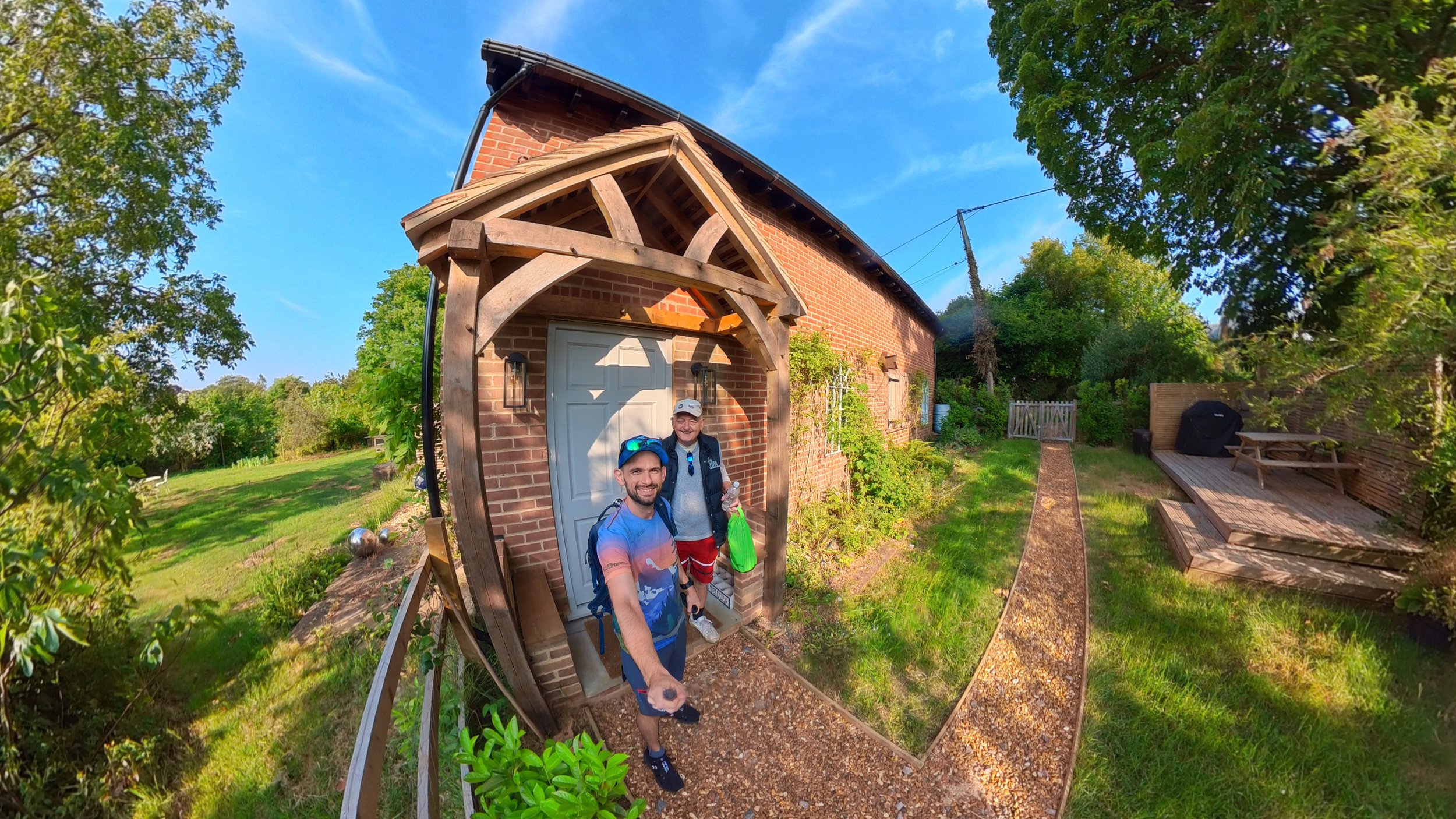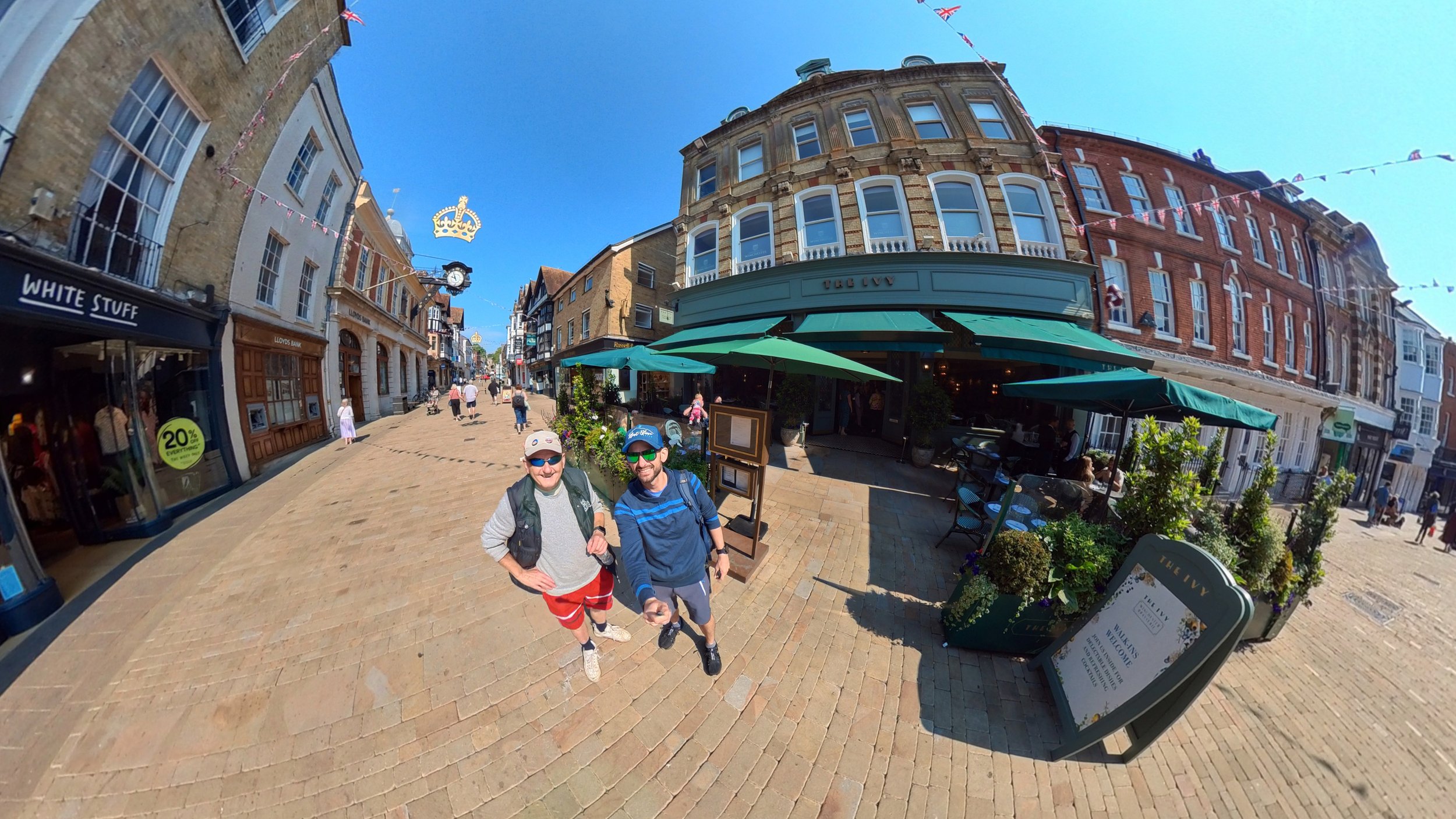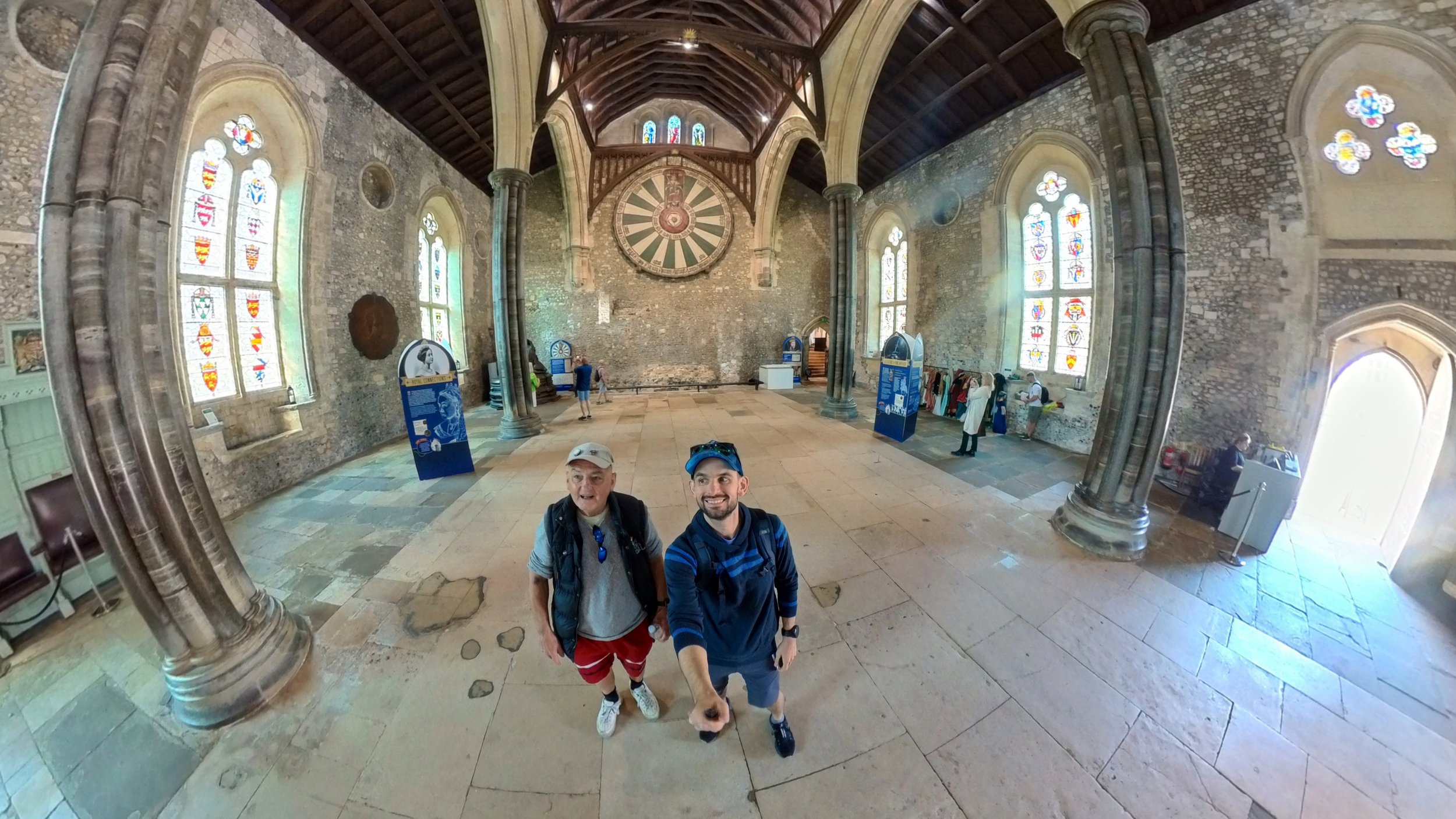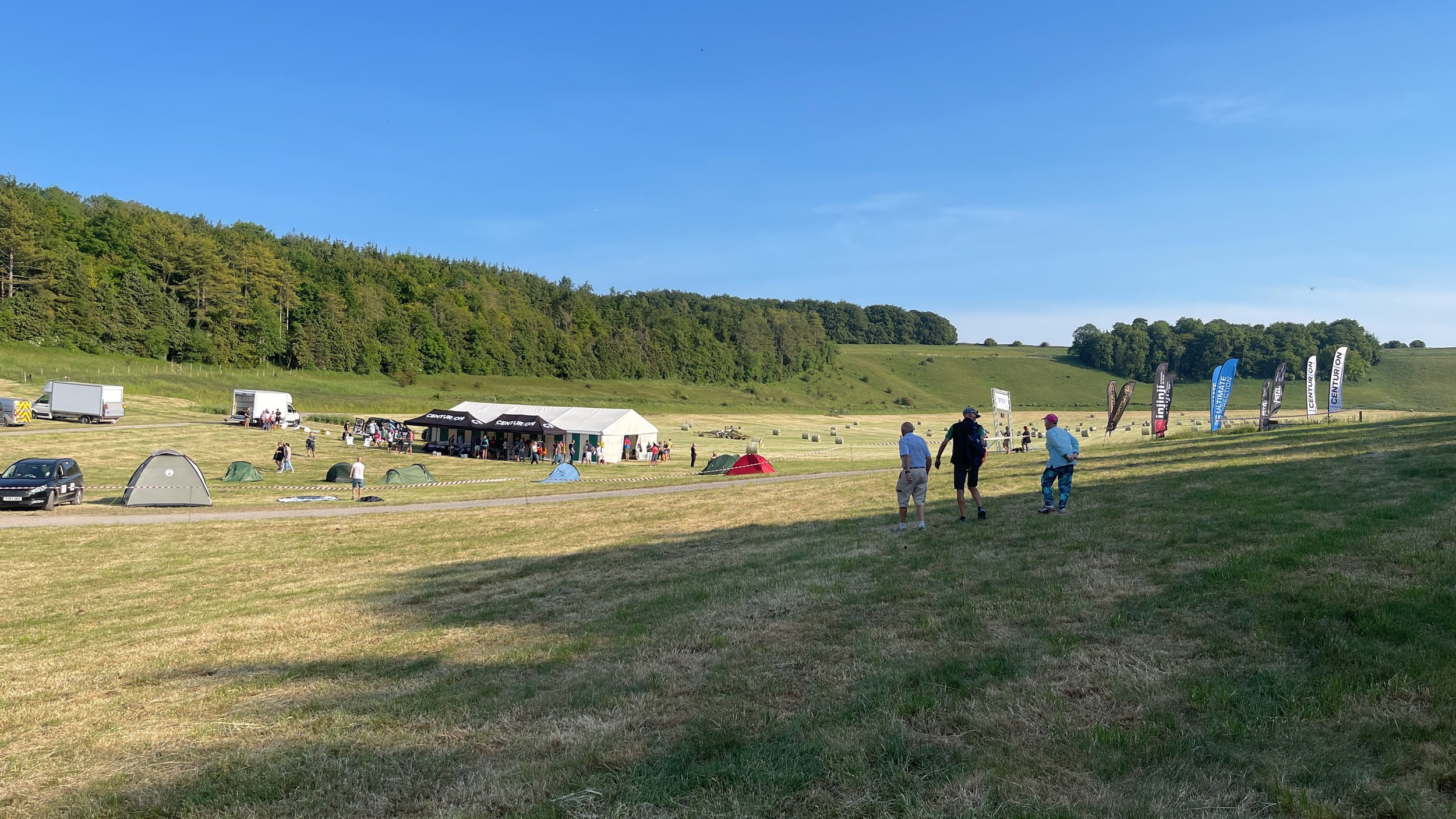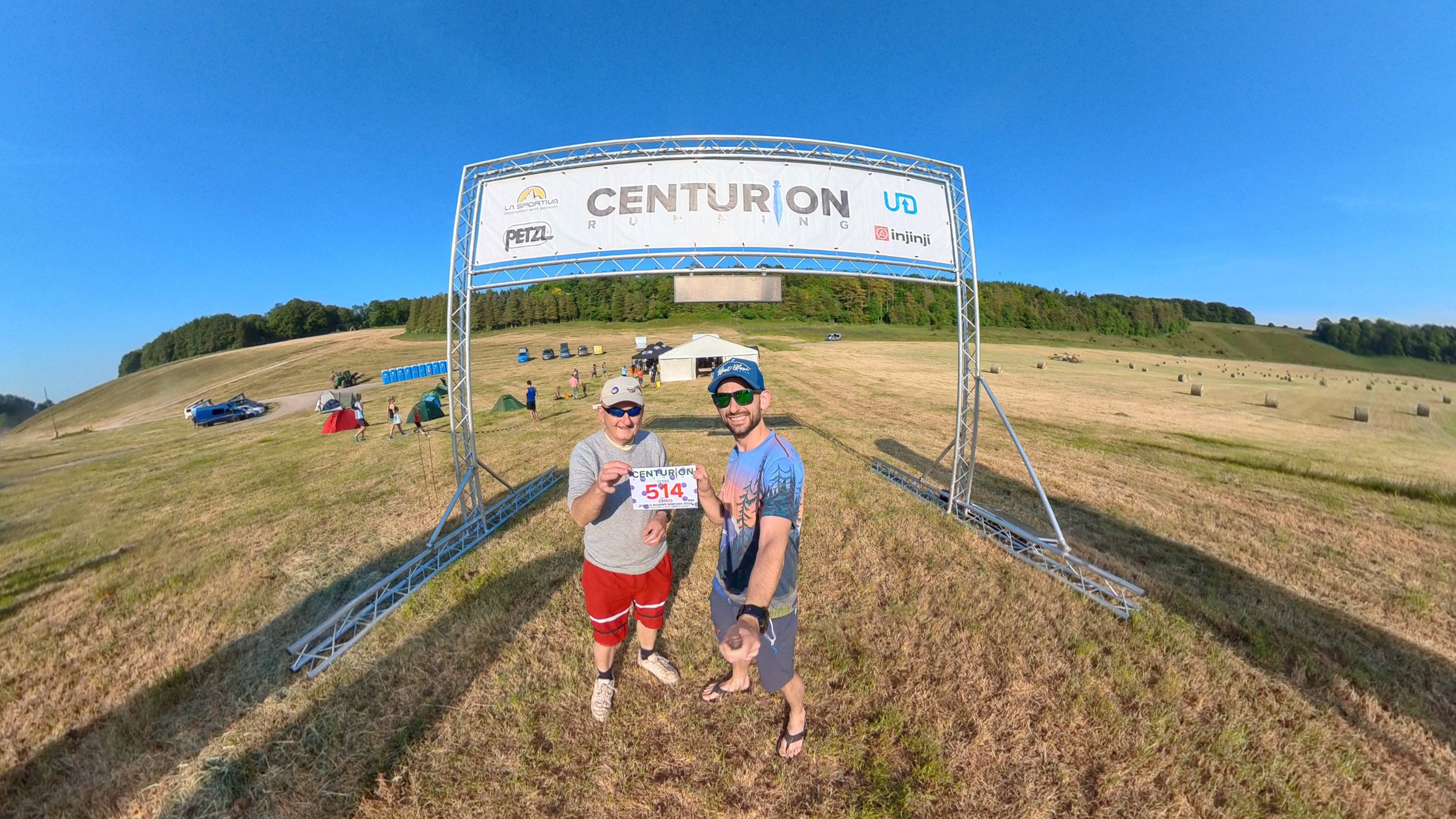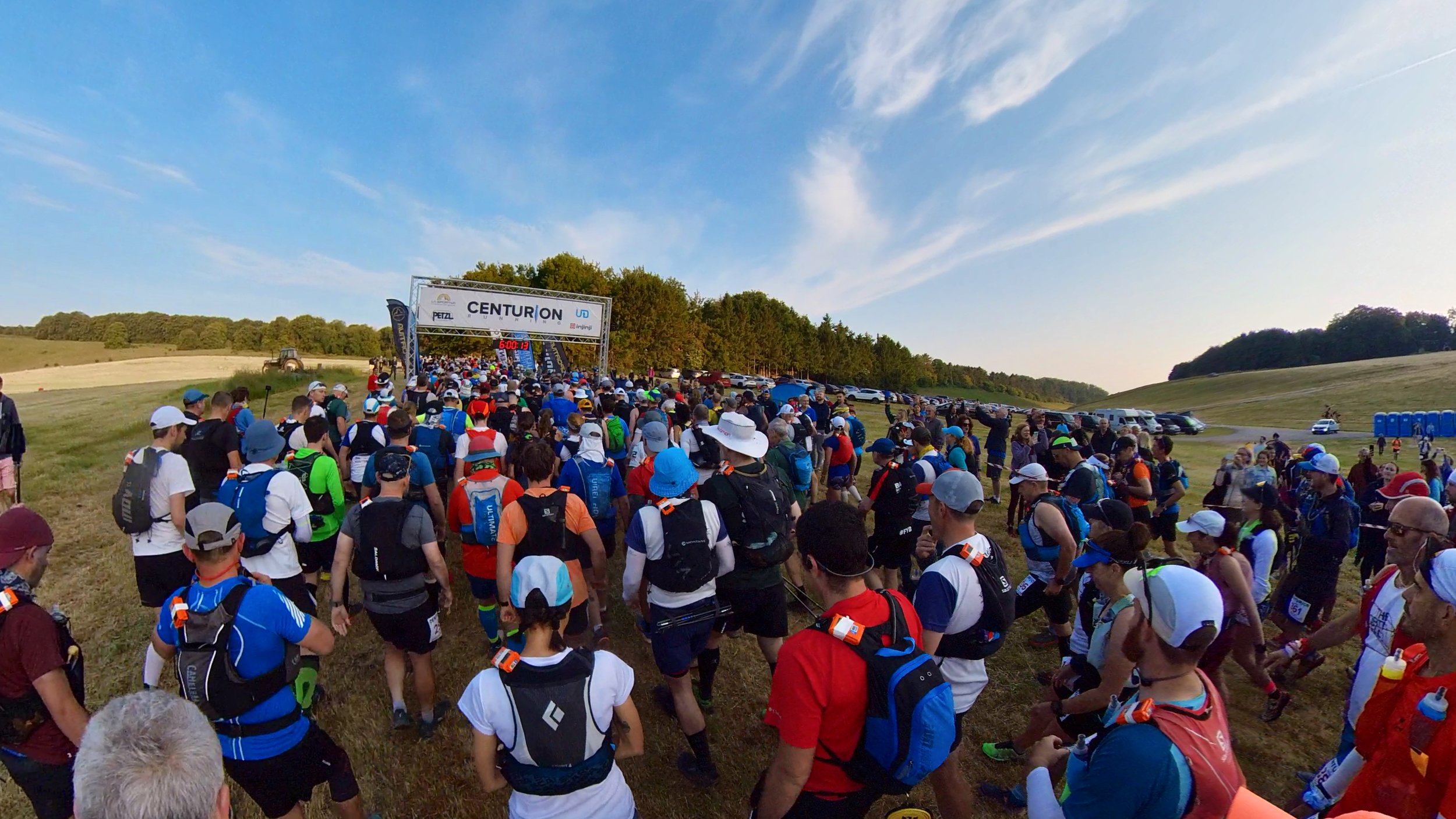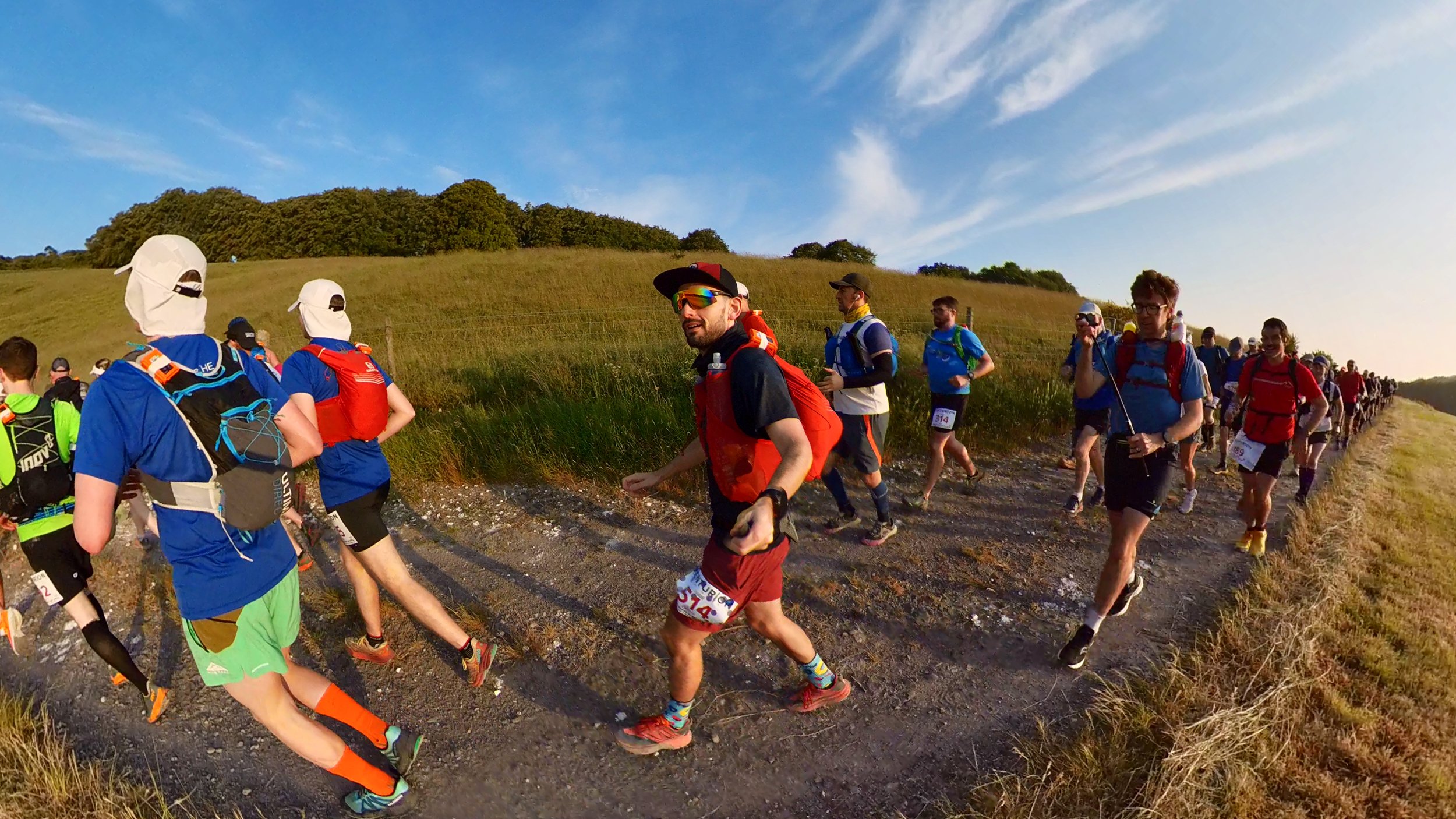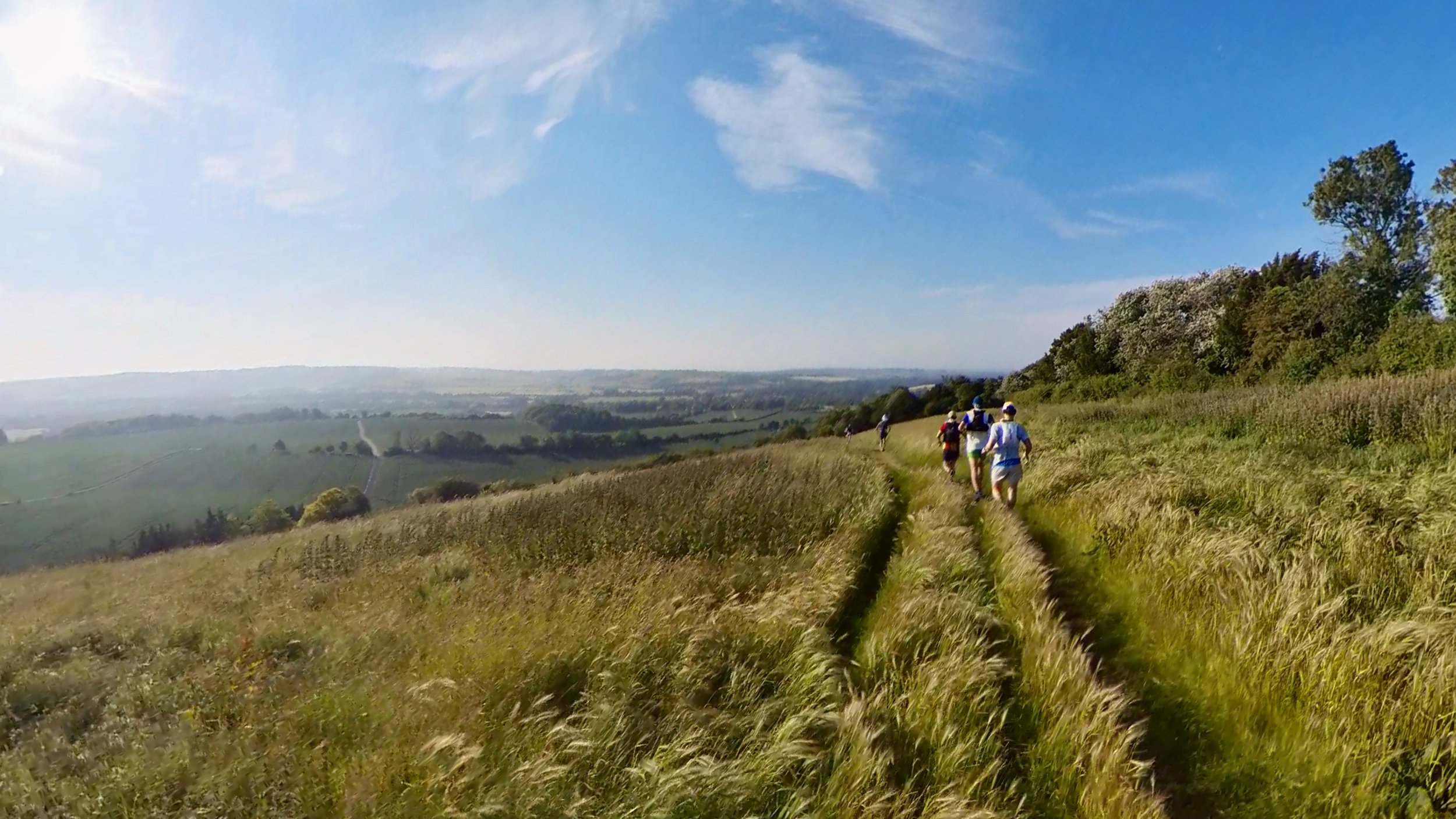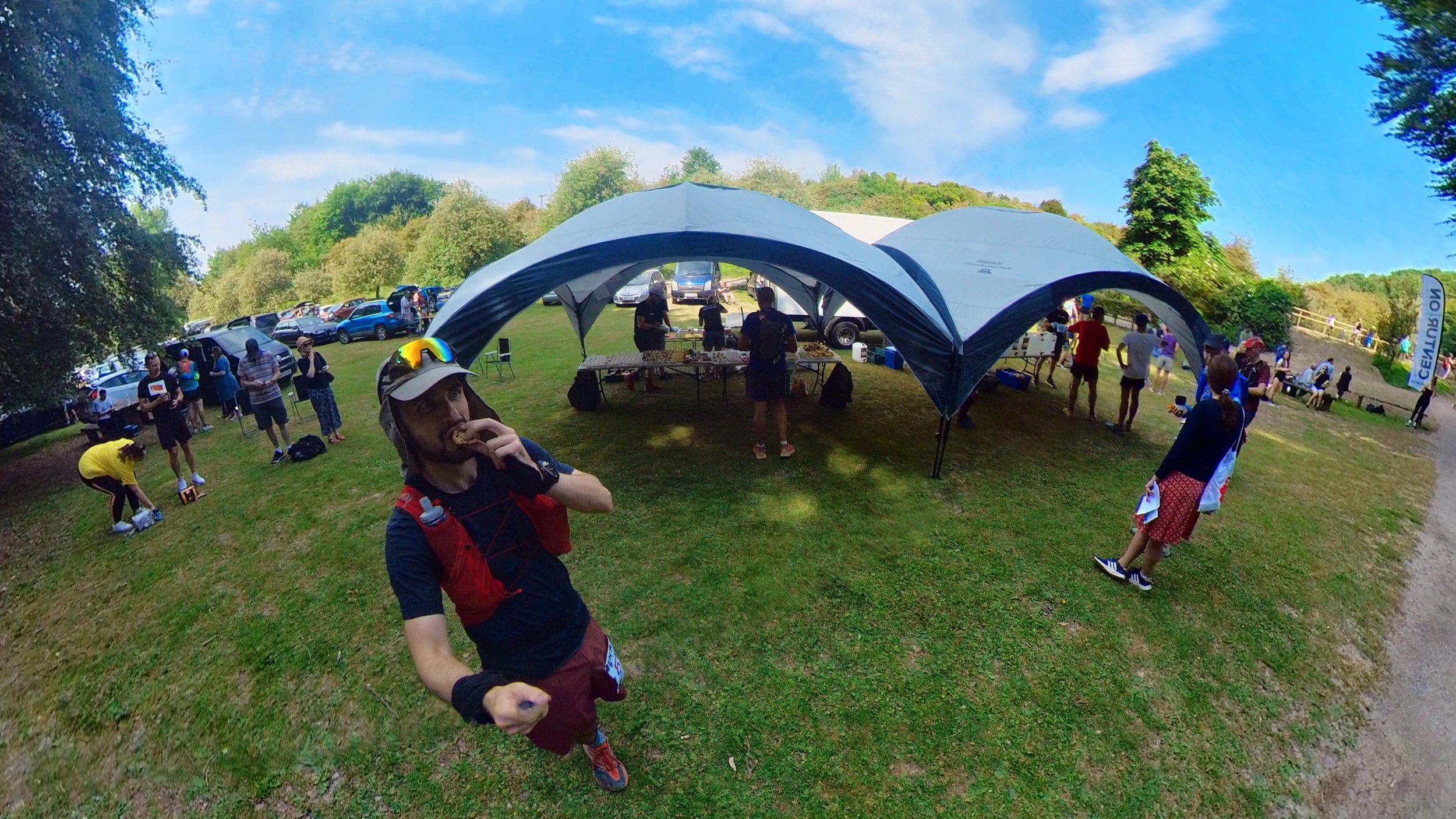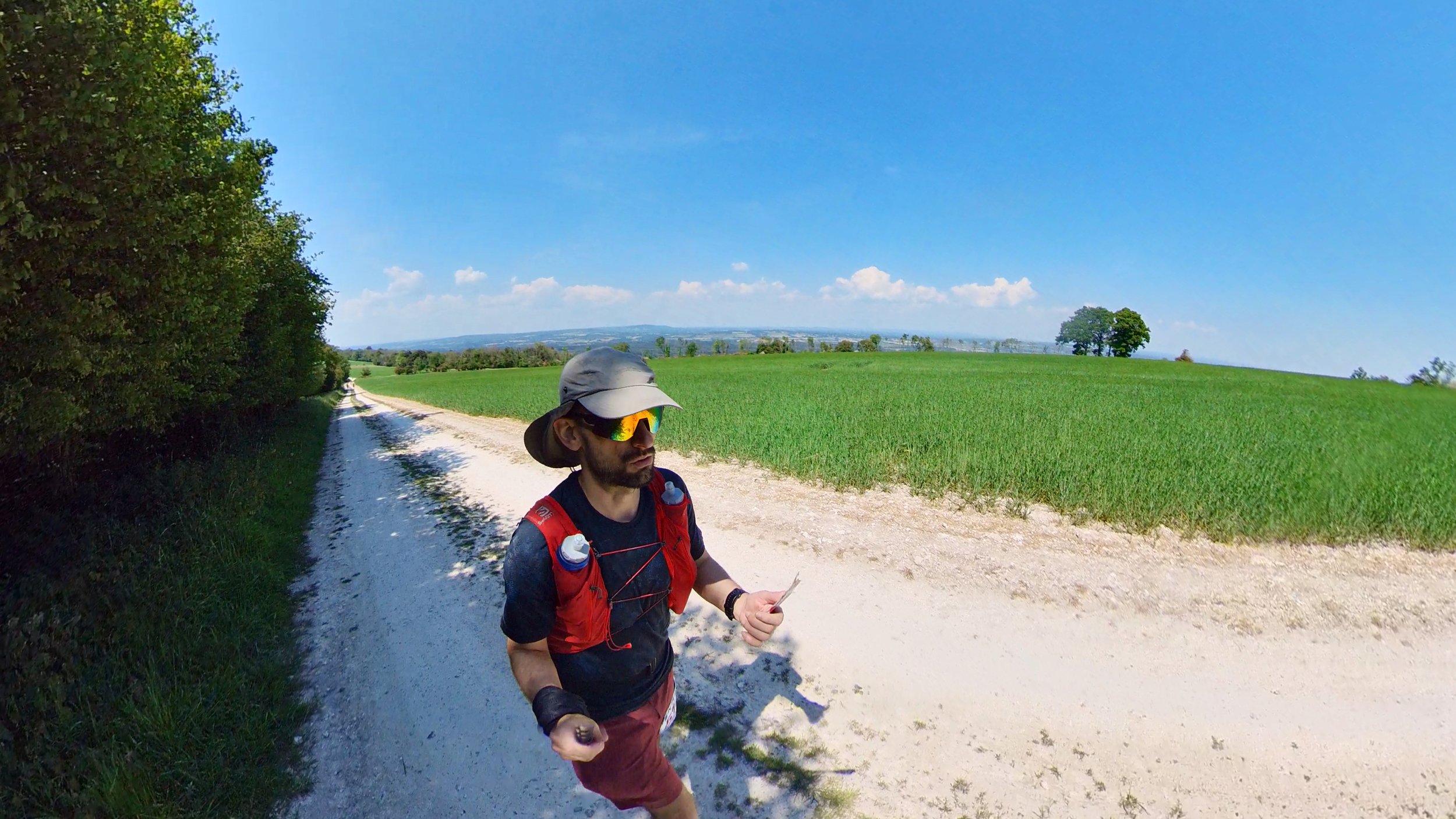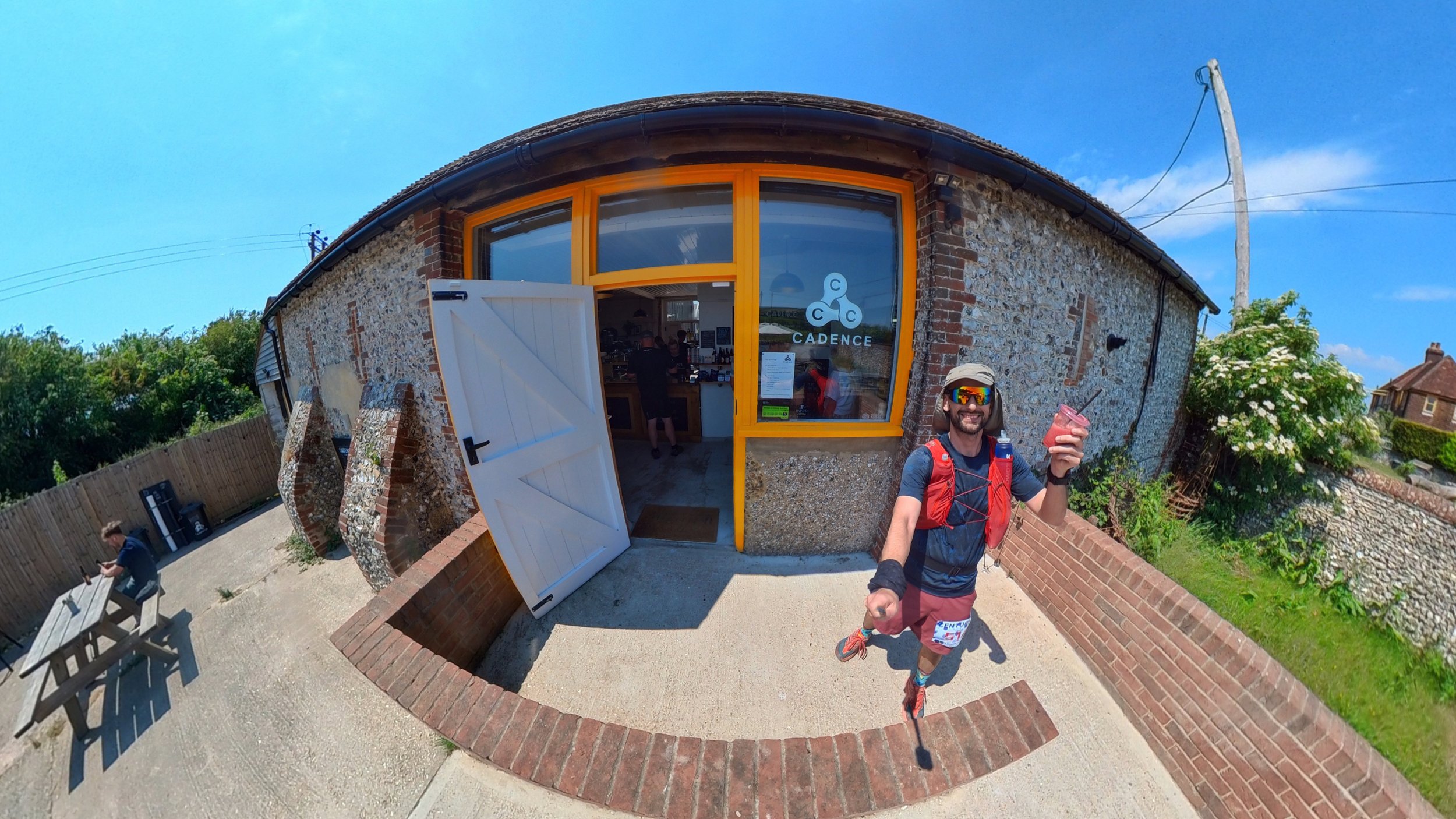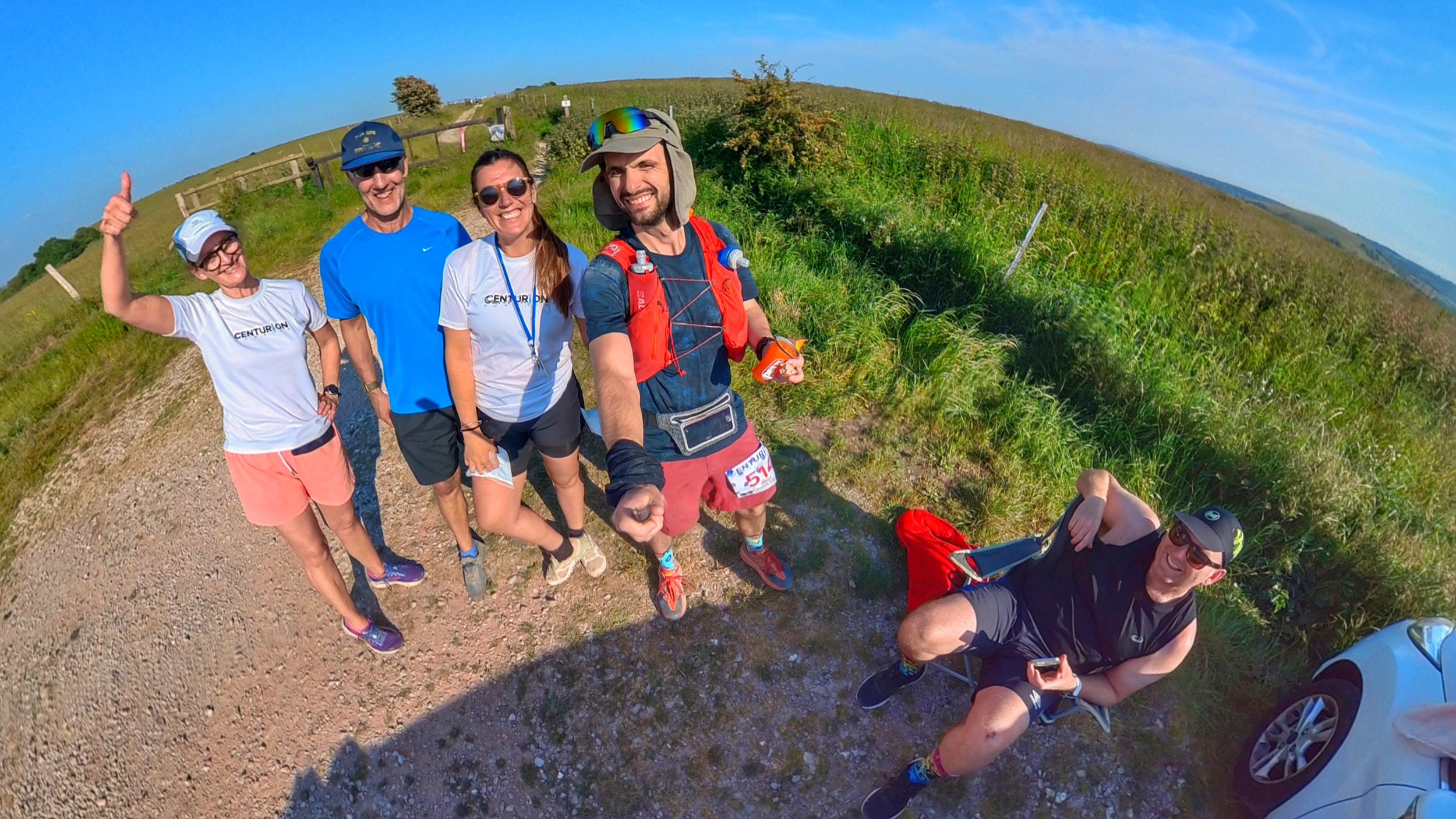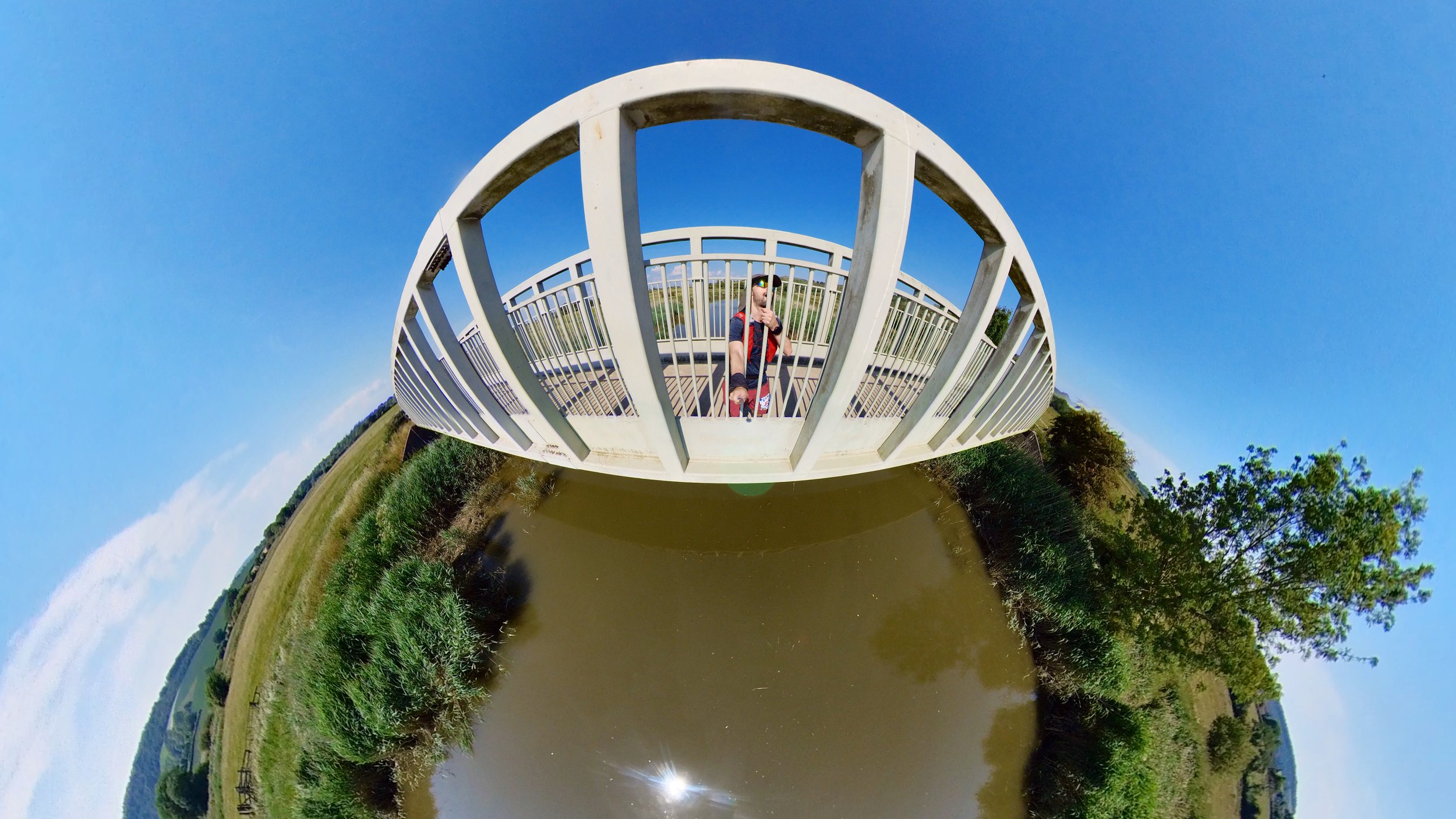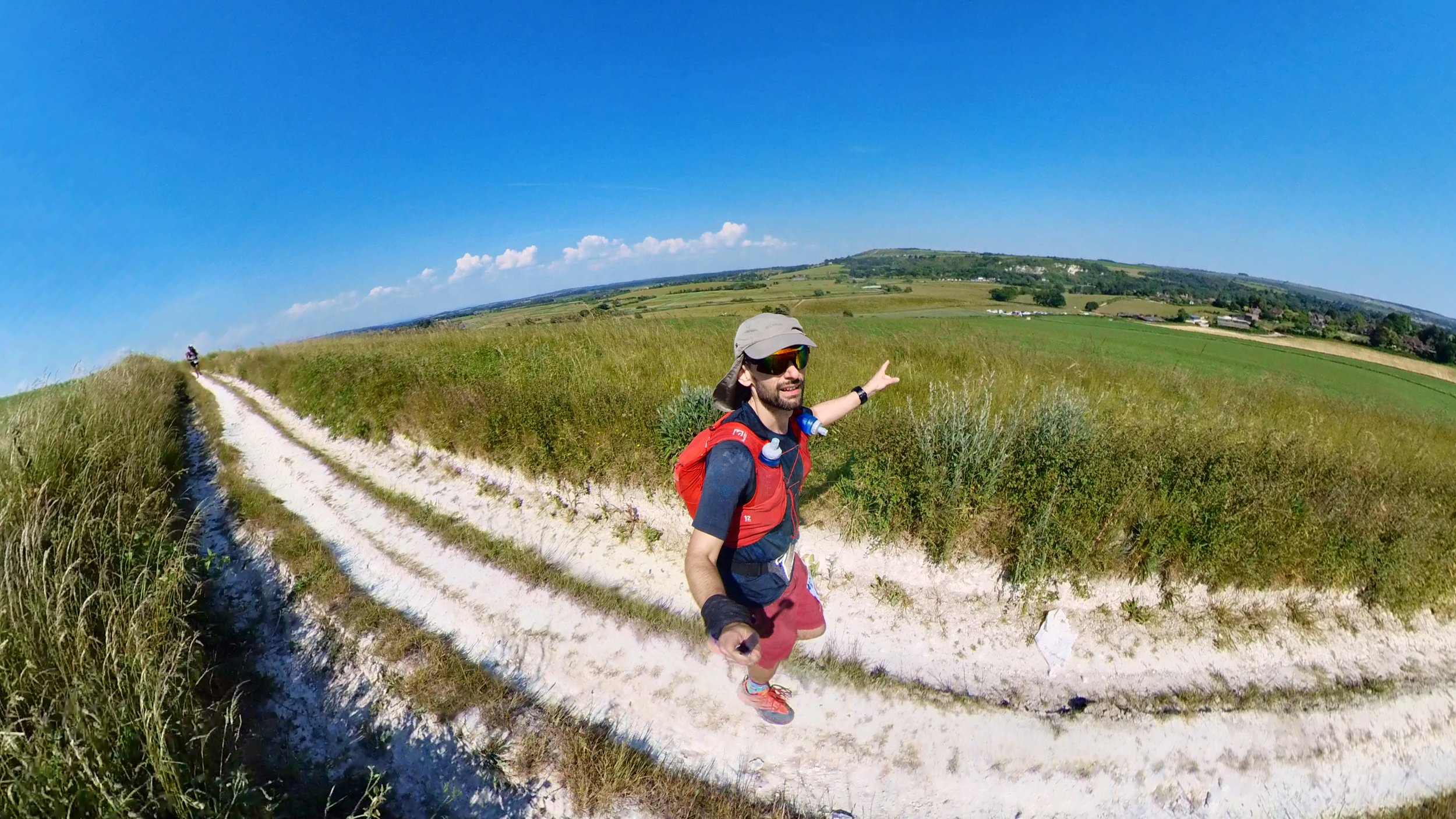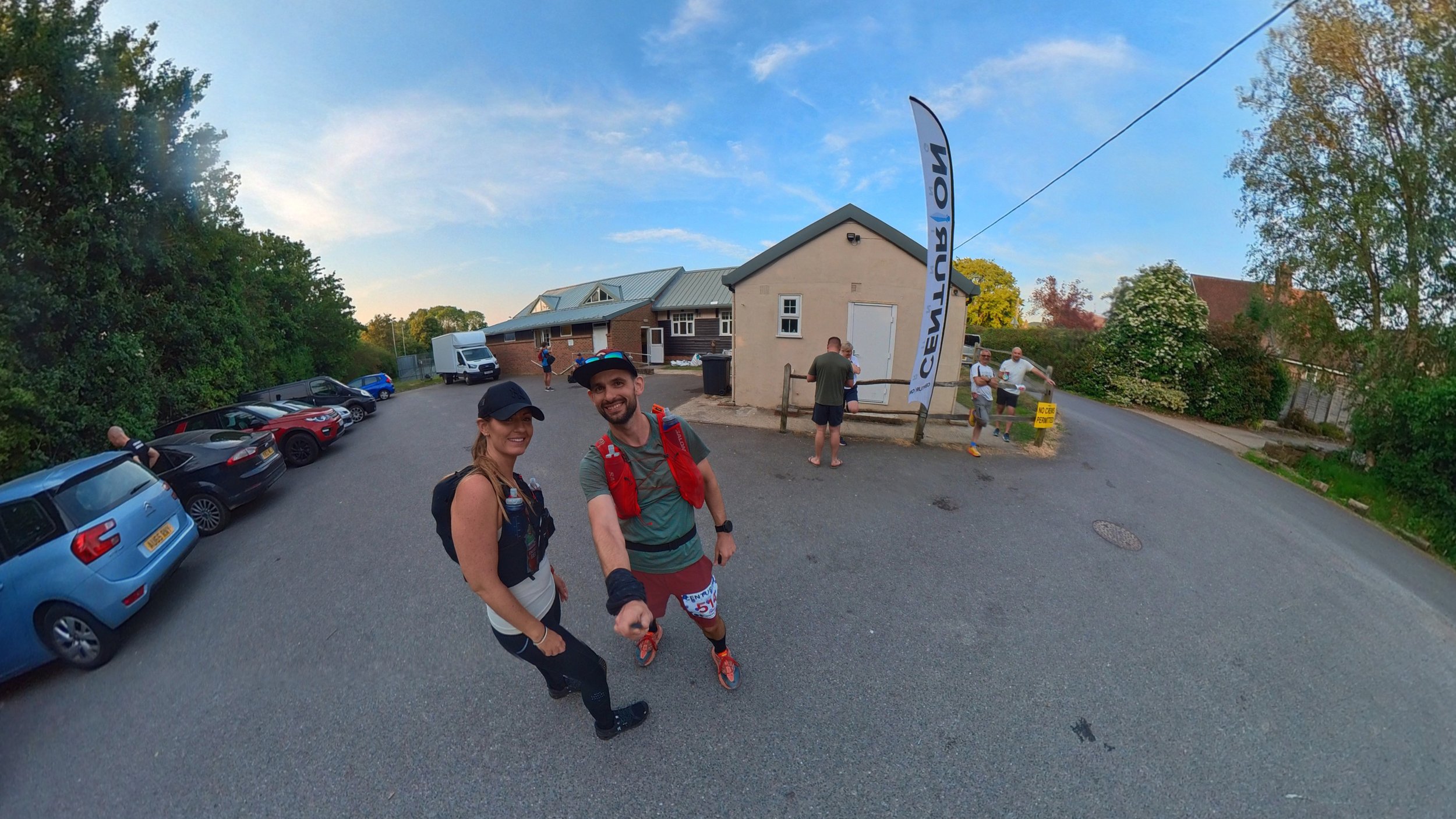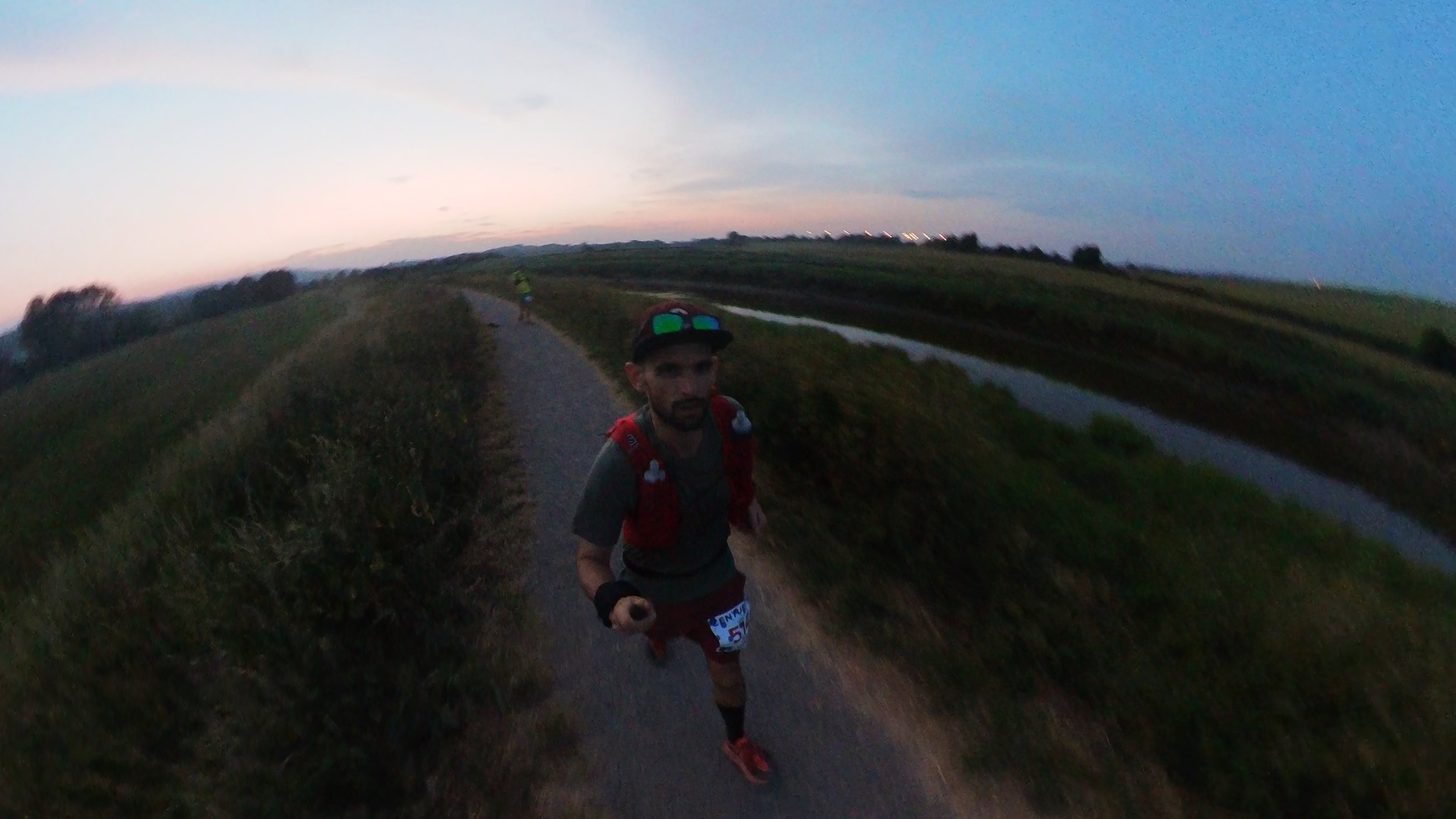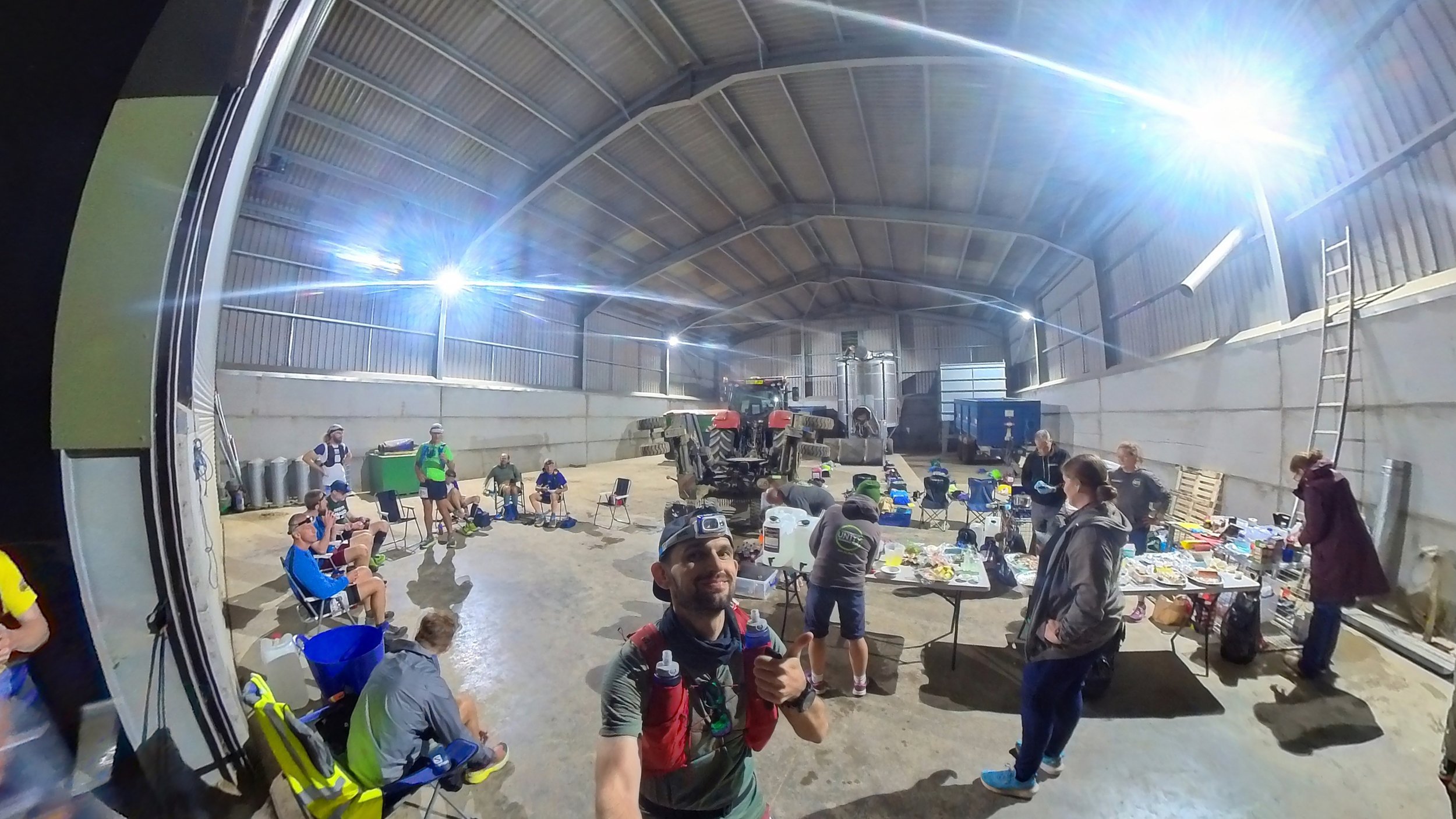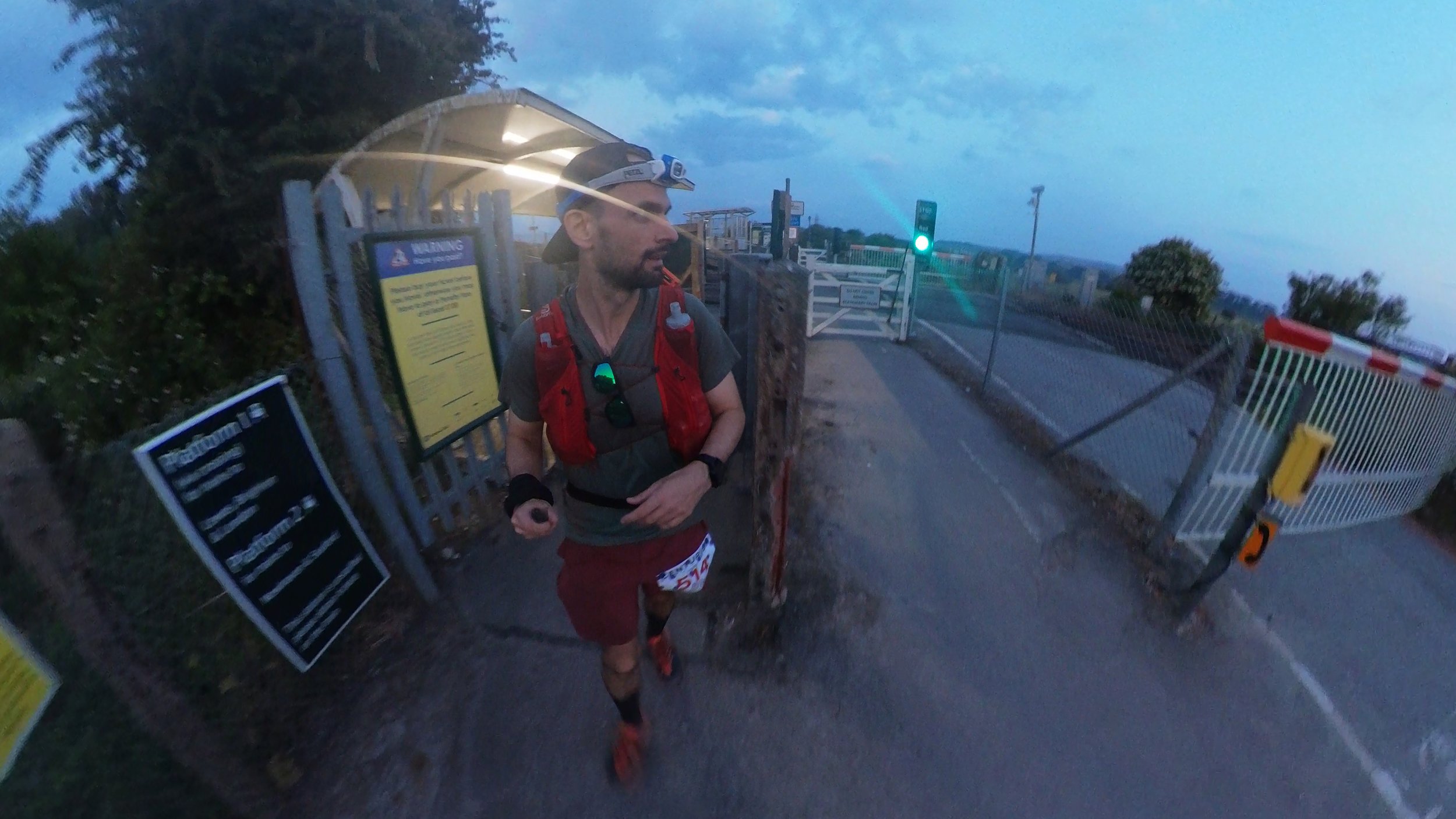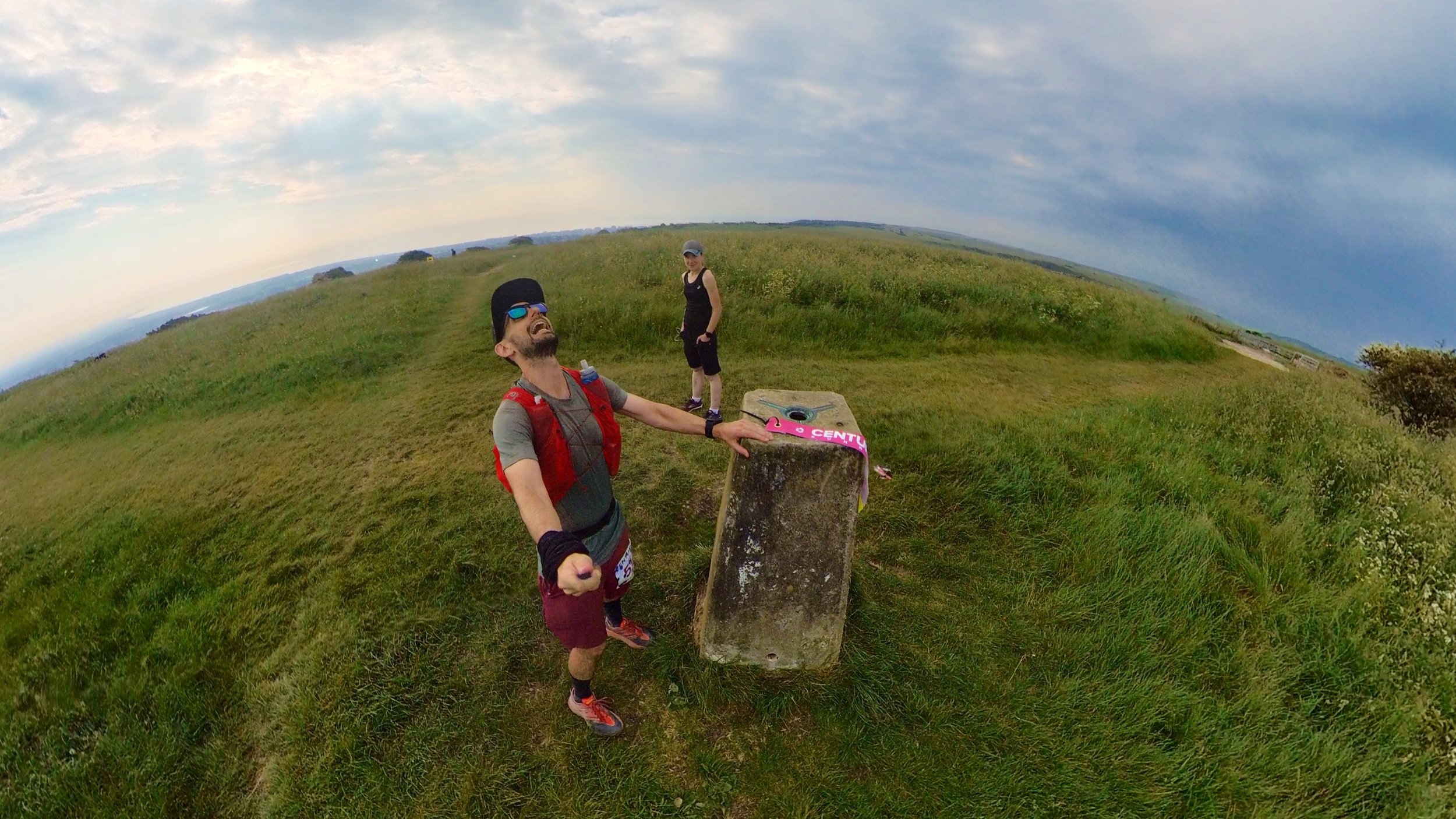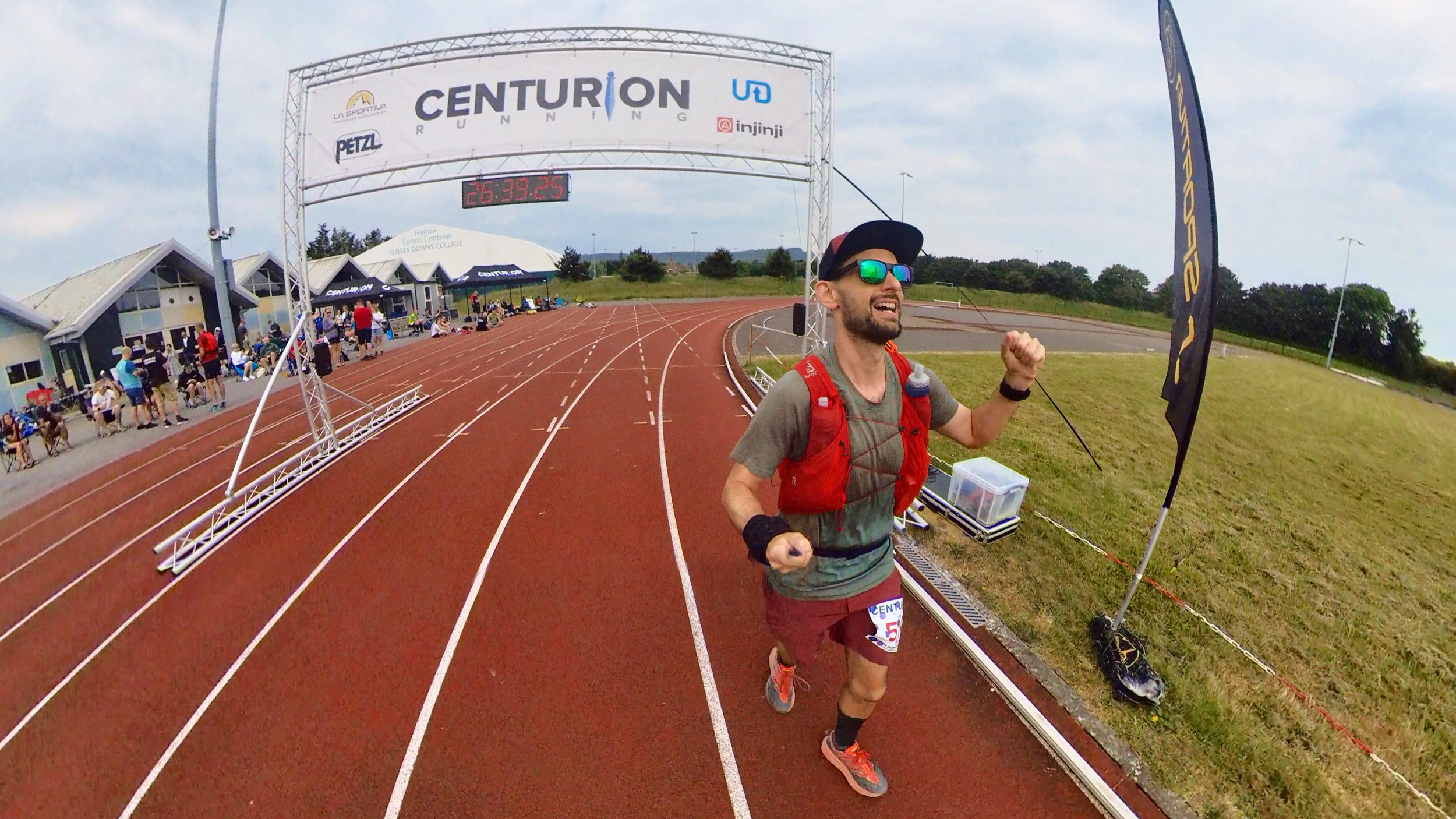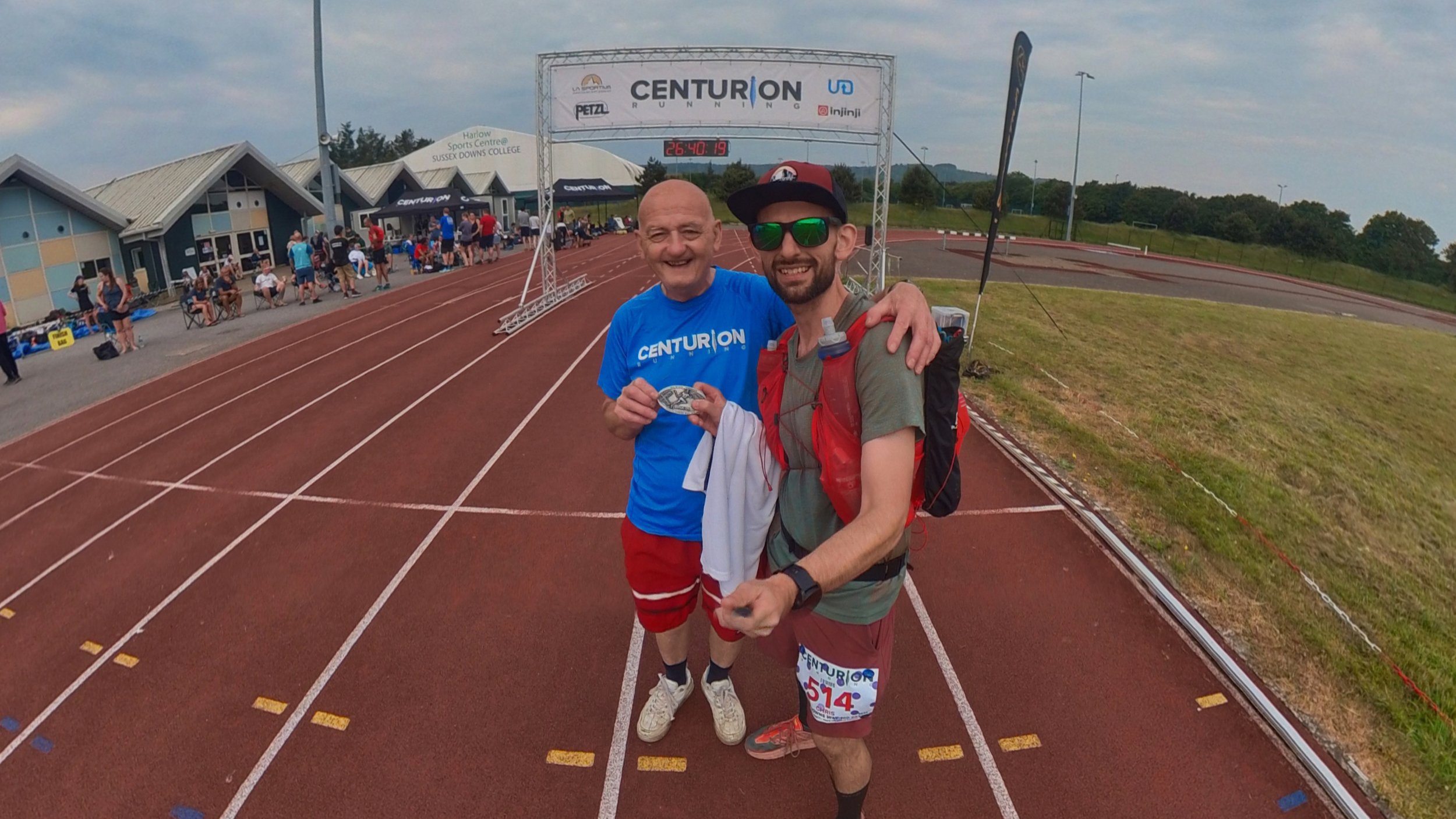Centurion South Downs Way 100
Another 100-miler! The Centurion Running South Downs Way 100 took place over the weekend of the 10th June 2023 and it was a scorcher. A rollercoaster of a race, with epic ups and downs, both mentally and literally given the number of hills to scale and descend. An epic race and one of my most hard-earned buckles to date.
Back At It - 100 Miles
After running the North Downs Way 100 back in 2019 I have to say that I wasn’t really of a mind to return to the 100 mile distance. I would love to say that the NDW100 was fun, fun, fun all the way but a little gander at the video I made of the experience would prove that to be a crock of BS. It was very tough and my finish time of just over 26 hours served to prove that point. 100 miles, I concluded, was rather an insane distance to attempt to run in one go and figured that I’d probably be ‘one and done.’
Well, the funny thing about time and the human brain is that, on the one hand, we are prone to forget all the little details of an experience and event and tend to look back on things with rose-tinted specs, and secondly, endurance events and challenges of any ilk have a natty way of just nestling right into the little cracks in your brain where they sit and ferment and give rise to ideas. “Hmm….. what if I did the South Downs Way 100? It would be nice to ‘complete the set,’ wouldn’t it? It’s meant to be more runnable so it’ll probably be a lot faster and more fun, right?” The second one starts asking questions like these fate is already set.
It still wasn’t certain I was going to do the South Downs Way until the very last minute, for a couple of reasons. First of all, I had relatively recently run the Two Oceans Marathon in Cape Town, putting in a really solid sub-5 hour performance that I was still buzzing off, and so was on a bit of a recovery drive from that, and secondly, I had needed to submit my passport for renewal. If, I told myself, my new passport came back quickly - a far-fetched idea, or so I thought at the time - then I would take it as a sign and enter the race, especially as Sarah, my coach, had advised me that being a Centurion-coached athlete I was essentially guaranteed a spot. I did not expect the UK passport office to knock it out of the park in quite the spectacular way they did and so when my passport came back to me in less than 3 weeks - kudos the UK, not something we get to say very often - it was official: me and the South Downs Way 100 were about to get acquainted!
I went into this 100 miler feeling a lot more confident than I did back in 2019, when the furthest I had run at that point was 85km. Since then I have done the North Downs Way 100, completed the Comrades Marathon, circumnavigated the UTMB route, had a crack at the Cape Wrath Ultra and done the Two Oceans Marathon. Basically, I have done a lot of running over the past few years and so felt that I had a long distance event in my legs and the mental fortitude to be able to get the job done. Besides, the South Downs Way is “much more runnable and faster” than the North Downs Way and so I figured I had this. I knew I was fit enough and so it was more going to come down to whether I was mentally gritty enough on the day.
Planning & Kit
The North Downs Way was a whole new experience and so going into the South Downs Way 100 I did at least have some inkling of what to expect from a 100 mile race, including what worked for me and what didn’t. Having a crew - in 2019 my parents ended up fulfilling this role pretty much by accident - does make a difference, as they can ensure that you have the various bits and bobs that you need at various points along the route, in addition to being on hand to go and fetch some item, whether it be equipment or nutrition, that might make sense on the day. Mum was unfortunately unable to join this year on account of a pre-booked commitment but dad was up for it, as was my sister, Amanda, who also said she’d be down to do some pacing, having commented that it seemed like it would be “fun” when I mentioned having seen other runners with their pacers at the NDW100. She was also going to bring down my two nieces for the weekend so we had the makings of a fun family weekend, one where Uncle Chris does a crazy thing by running from Winchester to Eastbourne in a ‘wunna.’
Documents were prepared, detailing the various crew points and what kit etc they would have with them, whilst I planned out my race by banking on an average pace of about 8km per hour, working out the time I expected to be at each key location. This included a nutrition plan, essentially telling me how much carbohydrate, salt and fluids I should aim to consume per hour, and was printed and laminated so that I could carry it and refer to it throughout the race. This did actually make a difference especially during those parts of the race when my brain just wasn’t operating optimally.
Nutrition has always been my stumbling block and specifically ensuring that I consume enough energy to sustain a consistent effort. Sarah and I also concluded that in previous races, such as the 82km ultra in Al Ula, where I hit the wall at about 60km, I hadn’t consumed enough salt. As such, salt tablets were purchased and electrolyte top-up incorporated into my overall plan. As in previous events, the foundation of my nutrition plan was to fuel mainly using Tailwind - the aid stations were supplying it but I intended to top that supply up - and Hi5 gels, which worked for me at both the Comrades and Two Oceans marathons. As such, what seemed like a metric ton of both Tailwind and gels were ordered online and delivered back home in the UK, from where I’d pick them up before heading to Winchester for the race.
Last year, when I headed to Scotland for the Cape Wrath Ultra, the UK experienced unseasonably wet conditions. This year it transpired that the weather was going to try something completely different as a heatwave was instead predicted. “Hmm….this could play to my strengths,” I thought, although I also know how punishing lengthy periods of time out in hot, sunny weather can be and so was quietly hoping for there to, preferably, be some degree of cloud cover on the day, especially as the South Downs Way route was not known for being very ‘under cover.’ In typical UK fashion, the forecast seemed to flip-flop between “very hot” to “mild” over the days leading up to race weekend, with thunderstorms even predicted at some point during the race. In the end what we got was a classic “scorcher,” which played the key role in how many runners’ race panned out.
Two bits of additional kit that I purchased very last minute, and was incredibly glad to have done so, were a pair of SunGod Ultras, a rather 80’s looking wall of UV-blocking eyewear that did a great job of covering and protecting much of the upper half of my face during the day, and a desert cap, the one with the flappy sides and bit at the back that covers your neck. I was fortunate enough to be able to get both literally the day before the race and am convinced that they played a significant part in me avoiding full-blown sun-stroke.
Winchester - Ye Olde England
Dad and I headed down to Winchester a couple of days before the race as I wanted to avoid any undue last minute rushing and be able to relax a little beforehand, in addition to getting to explore Winchester a little. I booked a stunning little AirBNB in Twyford, a charming village on the outskirts of Winchester, arriving Thursday evening. On Friday we headed into Winchester itself and spent the best part of the day in tourist mode, starting with a hearty breakfast at the Ivy, for a touch of class, before exploring the main sites of the city, from The Great Hall to Winchester Cathedral and the statue of King Alfred the Great. Given how important carb-loading is before a big endurance race plenty of time was carved out for the essential task of eating well, and dad and I left the city feeling culturally and gastronomically sated.
A short drive from our AirBNB was Matterley Bowl, the site of the start line and where we were to register, picking up my race number (514), complete with some additional lilac spots, which I was informed denoted me as a Centurion runner - no pressure there then! There was a demonstration of just how hot and dry conditions were as we drove down the farm track towards the bowl, chalky dust instantly kicked up into the air by the cars in front, rendering the air almost foggy. It did make me chuckle when I saw one car heading out with it’s roof down and it’s occupants looking very much dusted and somewhat like they’d just spent a rather debauched weekend in Vegas partaking in a little too much naughty salt!
I was also given my GPS tracker for the race, which was taped onto my race pack, before dad and I headed back to wait for Amanda and the kids to arrive, and finalise things for the next morning. As far as settings for a race start went, Matterley Bowl was stunning: a truly English countryside vista if ever there was one, with freshly cut rolled bales of hay, a couple of tractors in view and all closed in by a sweeping bank of rich green grassland.
RACE DAY
Needless to say, it’s impossible to get anything approaching a “decent night’s sleep” immediately before a big race so when the alarm went off at 4am I was already awake. Having set out all of my gear the night before, all I really needed to do was shower, 3B and BodyGlide myself up, tape my feet up - in hindsight, I should have taped up more of my feet but it actually takes way longer to do than you think and so I just ran out of time - and then EAT! Amanda kindly drove me down to the start and we arrived literally 5 minutes before the start horn went off, so cut it a little close. However, the upside was that it curtailed any last minute nerves and the stress that ensues from hearing the kind of chat that you hear before something like an exam: “how was your training?” “Oh, I didn’t really train!” Before they then go and smash it out of the park. It’s weird how we do that as humans, isn’t it?!
Once again, I opted to take along a camera, this time actually packing both my GoPro and my trusty Insta360 OneX2, which has proven to be the perfect camera for running events like this as it not only fits perfectly into my race pack side pocket, but captures literally everything meaning I can just pick and choose the shots after the event. I have also mastered the skill of deploying the camera on the run, packing it back without having to break stride. Getting to look back on my NDW100 experience courtesy of the footage I filmed was not only a fun momento of the event, and allowed others to ‘come along for the ride’ but also served a more useful role of being great race-review material. It is inevitable with a loooooong race such as a 100 miler that little details, and sometimes whole sections, of the experience just get forgotten or misremembered. Having a camera on hand means that there is a record of the ups and downs, which makes dissecting the race and learning lessons from it so much easier. Plus, it also records for posterity some of the comic parts, such as me ‘seeing’ an ostrich in a field, only to realise moments later that it was, in fact, “just a path.”
The going was great for the first couple of hours and I was actually about 45 minutes ahead of schedule as I reached the first aid station. I wasn’t even feeling like I was pushing it too hard and so this buoyed me as I considered the prospect of posting an even faster time than the 22 hours I had predicted… But, the hot conditions that had settled over Southern England had different ideas.
My first concern was that despite being mindful to keep fluids going in and taking salt tabs every hour, which coincided with drinking about 500mls of fluid, I didn’t need a piss until about the 25km mark (QECP) and even then it was pretty concentrated, which didn’t feel right! How was I not better hydrated?! My salt intake was pretty high and I didn’t feel like I could drink any more fluids without risking a huge fluid filled stomach and vomiting! I called Sarah (my coach) at this point to discuss the situation and she said I would need to adjust the salt intake according to the conditions and how I was feeling, so more if any dizziness, tingly skin, headaches etc. My big concern was renal failure - I definitely did NOT want to risk that! If I’d have really thought things through though I’d have realised that the issue wasn’t so much fluids but more HEAT. I needed to actively cool myself down, something that I must have actually known at a sub-conscious level as I’d messaged my crew to ask them to try and pick up some ice. The eventual race winner, who had a blinder of a race, enacted a very effective active cooling strategy, stuffing his race sleeves with ice at crew stops and dunking his head in water at every possible opportunity.
The climbs and descents very quickly revealed themselves to be pretty steep as well! Most were on good paths but some were very uneven, hard and challenging on the legs, especially the quads and knees. Hmm… those poles were starting to look more desirable, although I’d opted to leave them with my crew, so would not be getting access to them until the halfway point.
It got progressively hotter as the day wore on and despite doing what I could to cool myself at the aid stations and keeping fluid and salt and energy going in I soon baked! One of the issues was the fact that the South Downs Way does not really have any cover and so we were exposed to the full glare of the sun, coupled with the fact that it is chalky terrain, meaning the sun reflected off the ground and back up at us, much like it does on water. So, cooked from both angles: great for a rotisserie chicken but not so much for a ultra-runner!
There was a cafe just before the Cocking aid station at the 35 mile (56km) mark, which felt as though it coincided with the peak of the mid afternoon heat and was a very welcome respite. I took advantage of having my ApplePay on me as I ordered a slushie and ice lolly! Bliss! Also, just to get some shade. As much as it was tempting to spend more time in that refreshingly cool refuge, I knew that I needed to haul ass and get moving. That’s the thing with long ultras: there will be plenty of points where the thought, “hmm…I could just take it easy here and walk, or even stop for a bit” becomes like a siren call in your head. Resisting the temptation to given in to these thoughts is one of the biggest challenges when it comes to ultra-running.
As I left the Houghton Farm aid station (45 miles/ 72km) I opted to pop in the old ear buds and fire up some tunes, with The Mysterines setting an upbeat mood as I headed towards the Arun River crossing. I was feeling pretty pumped I must say and confess that I was definitely engaging in some furious air drumming as I ran along, needless to say looking like a proper head case to anyone running behind me at that point. This mood was short-lived though.
As I was scaling the next big hill (now, forever christened Chunder Hill) my stomach just decided out of seemingly nowhere to invert and there was nothing I could do but ride the vomit comet, feeling my fuel gauge go from “something” down to “absolutely nothing.” Crap! Not a good development, especially as I knew from previous experience how hard it is to claw it back and keep going after bringing everything up like that. Wow! This race, or more to the point, the conditions, really were kicking my butt!
I mostly walked the next 15km or so (might have been less?! Brain wasn’t really working), as it coincided with the hottest part of the day and I felt like I had NOTHING in the tank at all - I was back feeling like I did at 60km in Al Ula in Saudi Arabia. Like a wisp of a man mustering everything I had just to resist the temptation to curl up on the grass and just stop! I found myself looking at sheep sitting under a big tree with some intense envy! I really began to doubt myself at this point and couldn’t have said whether I was going to be able to finish or not. That’s how utterly shite I was feeling. By the time I was approaching the actual halfway point I was moving on pure fumes and had Amanda joined me at Kithurst Hill (the official halfway point) then she’d have been less my pacer and more my chaperoning carer just trying to coax me to the Washington aid station. When spectators congratulated me on a “great effort,” it was as much as I could do to just wispily mutter “thanks.” There was another cafe (same branding as the one before, at Cocking - some kind of Cycle Club) on the route and so after filling up with water I ordered another slushie, which I sipped on for the next few kilometres. Anything to just keep the fluids, electrolytes and energy trickling in.
On the way to Washington - by now I was about 2 hours behind schedule, so my race plan had been completely torn up and now it was about gritting this out - there was a small crew point at Kithurst where a very very nice lady took my empty slushie cup and then another lady sprayed my face with cold water and popped some ice on my neck. Clearly seeing how f****d I looked she kindly guided me to her and her team’s car, encouraged me to sit down, gave me some Coco Cola, Gaviscon tablets, mini cheddars (for the salt) and then a bit of sausage roll, “for the salt and fats.” I nibbled away at that before I started to feel a bit more human and got underway again. What heroes! I reckon thanks to that team and their kindness I made it down to the Washington aid station without collapsing and it set me on the path to recovery for the next part of the race. She also gave me a couple more Gaviscon tablets in case I needed them later, which I did the following morning, when I started to get that all too familiar feeling of nausea encroaching. Thankfully after chowing them down I was able to avoid another chunder episode.
The Kithurst Hill Heroes
I made it to Washington aid station feeling utterly spent! I was fully of the mind that I was probably beaten and that I’d be calling it a day at this point. “Well” I thought. “It was a long shot and I hadn’t really trained specifically for it - even though I had really; I was definitely race fit - and 100 miles is an insane distance to try and run, and……” So many reasons and justifications I was giving myself to just make it all stop. “If I stop now then at least I can spend the next day with my nieces and it’ll save Amanda having to pace. But then again, won’t she be disappointed that she’s come all this way to pace me and so if I stop now it’ll have been a waste of time for her.” What an absolute bunch of mind-fuckery at play! As Sarah correctly said though, all it meant was that my stretch goal was no longer in play, so the objective was now simply to finish and to do so before the 30-hour cutoff. That’s the nature of these endurance events: you make plans and then adapt as the situation, conditions etc change. It’s a great metaphor for life in general: sometimes shit just gets in the way of best-laid plans. What was I going to do? Get pissed off at the weather?! 😆 Of course not - that’s just the way shit panned out: the race coincided with one of the hottest days of the entire year so far. What to do?!
So, as it turned out, an hour (and a bit) of rest, a couple of bottles of Lucozade Sport and a small bowl of pasta was what I sorely needed! I also tended to my quite sizeable heel blisters, draining them much to the disgust of Amanda, before applying a dressing to each and taping over them, which whilst it did not dissipate the discomfort did at least cushion them a bit. Blister care is something that I learnt from the Cape Wrath Ultra and thanks to that race I had a decent blister kit on hand.
A change of T-shirt and socks helped dissipate my overall feeling of ickiness and I also swapped out my hat for my normal cap, retiring the desert hat, in addition to donning my more normal pair of sunnies for the final couple of hours of sun. The Ultras had served me very well today! A good purchase indeed! I had initially intended to change out my shoes, swapping the Hoka Speedgoats for my trusty Salomons but as soon as I put them on I knew it was going to be a mistake as they seemed to press right in the spot near the heels that the big blisters had been. Best stick with the Hokas! Amanda did a great job charging my various devices, although the batteries on everything were holding up pretty well - hurrah for modern battery technology.
I opted to take my poles with me for the second part of the race, although had a total mind failure when it came to recalling how to attach the quiver, with the assistance of one of the volunteers and then a couple of other runners forthcoming, which was a tad embarrassing. The irony is that I didn’t actually end up using them at all, as I think I was mindful of what Sarah had said about the danger with poles is that it takes up your hands and so you’re less inclined to eat and drink as much.
I definitely felt well enough come the end of the hour to press on and agreed with Amanda that she’d pace me until the next crew point, which was about 20km away, and then I’d make a decision about whether to continue or not. I think, however, we both felt a bit intimidated by the distance as Amanda had not run anywhere close to that kind of distance before, the hill climbs were certainly meaty to say the least and the concern was that far from pacing me she would end up holding me back. This became apparent as we started up the very first hill and Amanda started dropping back already. The decision was therefore made collectively that it would be best if she headed back to Washington and got dad to circle back for her, whilst I pressed on and met them at the Devil’s Dyke crew point. This turned out to be a good call as I actually felt quite good and picked up the pace significantly once the climb levelled off and it opened up. As such I found myself sailing past runners and their pacers who had earlier passed me when I was in husk mode, something I don’t think would have been possible if we were limited to a pace Amanda could sustain. She is fit and active but endurance races like this, especially trail races, are very unique beasts and so it was a tall ask in the first place to expect her to step in with no actual trail experience. If she’s keen to have another go in the future then it would be a pleasure to have her along and I’d try and ensure we got some proper training in together beforehand.
The going did get tougher after the next aid station, and I also found myself eventually having to engage the head torch, something I’d been putting off until the very last minute both to conserve battery power and also because acknowledging that it is now nighttime represents quite a big shift in mental space during a race like this. The next couple of hours served up some big, relentless climbs and traverses across some wide, open fields as the route headed towards Devils Dyke. Mercifully, Centurion’s expert route marking once again made navigating simple enough, although some of the wide open sections did see the markers spaced quite a distance apart. At one point I saw a flashing red light off in the distance and concluded that it must be some kind of beacon on a gate. Weirdly though it took a lot longer to get to it than I had expected, the reason revealing itself to be that it was actually the back of a runner’s head-lamp! Lol! I told her how I’d mistakenly thought she was a static beacon and had felt myself going slowly crazy as I tried to get to it! Ah, what ultras will do to the mind!
As I reached Devil’s Dyke there were a group of people standing by the road, which made me think they were just waiting to pace runners and so I nearly continued on down toward the aid station. I’m glad I actually took a beat though and asked if that was in fact the crew spot as it transpired that crew had to park up along the road there whilst the actual aid station was the next stop WAY WAY DOWN the hill, which would have made returning to meet dad, Amanda and the girls a slog that I would NOT have been prepared to make. I called them and found them just down the road. Unfortunately they hadn’t managed to pick up any more of the Lucozade Sport drink that I feel had done such wonders in restoring me at Washington, so that was a bit of a disappointment as I’d actually been really looking forward to chugging down a couple of bottles. One item I’d asked them to get earlier in the day and that was duly made available at Washington was some cooling muscle spray. Aah, bliss! I remember how nice it felt to have my legs sprayed during the Comrades marathon and considering I did NOT dare take any pain killers on account of the whole “hydrated/ not” concern I took the bottle with me and sprayed my legs and shoulders several times more over the next several hours.
I did eat some rice pudding at this crew point, although by now my nutrition “plan” had gone well out the window. I actually don’t seem to be able to tolerate Tailwind and/ or gels for any more than about 60km as I then just find myself getting really sick of them, and as it turns out, actually sick. As such, my intended plan of either 500mls of topped up Tailwind or 500mls of the aid station Tailwind and two gels per hour did NOT last. Amanda had given me some Dextra energy tabs, which were quite good as I was able to just suck on them, but they weren’t going to sustain me. As such, I did my best to sip at the fluids I had then nibble on some real food at the aid stations, including getting on board with the hot, sugary tea. Once I’d said “yes” to the tea I knew it was definitely the “night-time” portion of the race for reals. This was also going to be the last point at which I saw my crew until the end, although Amanda ultimately decided to head back to Norfolk that night so I didn’t get to run across the line with my nieces, which was a shame.
Housedean Farm was the main aid station of the overnight portion of the race, sitting at the 77 miles (123km) mark. They’d set it up in a large farm building, so it was well sheltered, and I joined the circle of weary runners taking time to drink some sugary tea and enjoy the “treat” of cheesy beans that the volunteers had knocked up for us. Still, feeling my eyelids being super heavy I made a tactical decision to find a space further inside the shed, propped my feet up, set my alarm for 15 mins, covered my eyes and tried for a power nap. I’m used to this tactic from night shifts and I know that even if one doesn’t properly ‘sleep’ just the very act of resting one’s brain for a short period can be incredibly rejuvenating. You have to be disciplined though.
As I was leaving this aid station it felt chilly (probably because I’d stopped for a period of time) and so I donned my race sleeves and wore my buff as a neck cover. However, these lasted about 15mins before I went back to just a T-shirt. It turns out it was still a pretty warm night. Much of the next few hours are not especially clear it has to be said, as I just put my head down and soldiered on, knowing that dawn was going to be breaking before too long. I do recall getting to a bridge and then a railway station (Southease), over which we had to cross by a bridge, before arriving at the YHA aid station. There was then another steep climb. At some point I was convinced I saw an ostrich in a field (I could also see the White Horse - a famous landmark, not another hallucination - on a distant hillside) but then realised it wasn’t in fact an ostrich but just a path junction at a specific angle - delusions had set in.
The sunrise was phenomenal, with incredible views out across the downs to the sea and so much birdsong! It was beautiful and getting to experience the countryside and the crystal clear views across rolling countryside to the north and the English Channel to the south made putting myself through the last 24 hours worth it. It was exciting to get to the penultimate aid station at Alfriston (92 miles/ 147km) and then the Jevington (96 miles/ 154km) one had the bonus of fresh strawberries - yum! That was a wonderful little pick me up as I headed out for the final stretch up to the trigger point and then - hurrah - the final, narrow, steep, overgrown descent into Eastbourne and the final few kilometres through town, past the hospital and what then felt like a much longer run than I recall from the video to the sports ground. Yes! I’d done it! Another 100 miler in the bag and dad was on hand to cheer me in as I hit the track and found a final sprint in my legs.
What an epic odyssey this 100 miler had turned out to be. Not the race that I had planned, despite it looking like it was going to go better than expected early on, and it just proves that it is important to be adaptable and ready to adjust to prevailing conditions, constantly assessing and recalibrating as live data (both internal and external) comes in. A metaphor for life in general really.
With another Centurion Running 100 mile belt buckle in my possession I snapped a few finish-line photos, including with Race Director and Centurion owner, James Elson, who I am sure every runner feels like both hugging and throttling in equal measure during an epic event like this. The work that goes into planning, organizing and then successfully staging a race like this is staggering and I know the volunteers and race staff, including James, put in significantly longer hours than any of us runners do, so I am incredibly grateful to them. They really do stage some of the very best races in the UK.
Finish Time = 26 hours, 39 minutes, 15 seconds
108th overall (out of 192 finishers & 339 starters)
91st male (out of 156 males to finish)
A huge thank you to…
Centurion Running - for putting on such well organised and superbly staged races.
Sarah Cameron - Centurion Running coach extraordinaire. Without Sarah’s expert advice & coaching, and unwavering faith in my ability to get races like this done, I may well have been among those who DNF’d this one.
Mum & Dad - my chief crew members & cheerleaders.
Amanda, Laila & Amelia - thanks for turning out for the day & lending support.
The Kithurst Hill Heroes - I have no idea what their names are but they may well have saved my race through their assistance & care. Races like this rely so much on the kindness of strangers, so thank you once again.
Post Race
From Eastbourne, dad and I headed back to Brighton and our AirBNB for the next two days. A delightfully welcome bath - I did nod off at one point, which was a bit dangerous - and a couple of hours of sleep later I felt human enough to head out with dad to stroll the Brighton beachfront, taking in the weirdness of the pier, before finding a superb Indian restaurant for a truly delicious dinner. After essentially sustaining myself on mostly gels, Tailwind, Coca Cola and sugary tea for the last 30 hours, getting some proper food on board was wonderful! Back to the house and I conked out, sleeping soundly until the next morning, my legs actually feeling quite good all things considered.
Looking back on the race, once again, I think nutrition wasn’t my strong suit - I seem to struggle with gels and Tailwind (anything too sweet really) beyond about 50-60km as my stomach starts to reject them, and think that in hindsight I should have used the 1000mg salt tabs dissolved in water for electrolyte replacement rather than popping the capsules and drinking plain water. I also wish I’d realised the vital importance of actively cooling myself early on and really pushed harder for my crew to get ice, which I could have stuffed down the race sleeves I had with me and/ or wrapped it in a buff to carry. Cooling it seems was definitely the key to having a great race on a day like that and I do wonder what kind of race I might have had were I to have had in place an effective cooling strategy(?)
I ended up carrying WAY TOO MUCH stuff with me in my pack, including a lot of nutrition that I just did NOT use, such as most of the Tailwind individual serving packets I had and two sachets of baby food that I transported from Devil’s Dyke to the finish like some mental Tesco delivery man who’d lost his van. One item that my crew did get for me and that I opted to carry from Washington onwards was a can of cooling muscle spray, which I applied to my legs and shoulders at each stop, and that really did help keep my legs moving well and without any real discomfort. I chose not to take any painkillers - I just didn’t feel comfortable given my hydration status - and so the spray really helped. I’d definitely include this in any future drop bags for big races.
As far as crewing goes, it really is nice having a dedicated group of friends or family on hand to be a familiar face at various points and ensure you have what you need. There is also a real art to doing it really well, as you essentially become the running equivalent of a film-director. As for pacing, although the experiment with having a pacer on this race failed early on, I am not sure I’d necessarily do that well with one. I am a bit of a lone wolf during events like this and tend to get lost in my own head. I think if I were to have a pacer with me then they’d probably need to be comfortable with me not saying a whole lot for lengthy stretches of the race. Having said this, maybe I’d surprise myself and become a chatty motor-mouth?! Maybe I’ll get to test this out at the next one. God! Look at that….. I said NEXT ONE. There’s no helping me!
Centurion North Downs Way 100
You Ran How Far?!
“That’s insane!” The usual, and to be honest, pretty fair response that most people offer when they learn of the fact that I recently completed a 100 mile race - well, actually 103 miles if we’re going to be specific and truth be told those extra three miles really did feel significant at the time. The race in question was the 2019 Centurion North Downs Way 100 and takes athletes from the start line in the affluent market town of Farnham, Surrey along the North Downs Way, a national trail that traverses the stunning countryside of the Surrey hills before hooking a right and heading south into the garden county of Kent, ultimately crossing the finish line in the town of Ashford.
Why Run So Far?
I’d entered this race for a number of reasons some eight months or so prior, with the primary ones being that a) I wanted to do a race in the UK, especially given that I was long overdue a visit back home to see the family, and b) it just looked like a thoroughly picturesque route and a very well organised and run event. The fact it was 103 miles, or 168km, in length seemed like more of a technicality at the time, although the full magnitude of that fact soon became apparent once I was actually taking part. The longest race I had, up to that point, competed in was a 50-miler, or 80km, trail ultra in Whistler, Canada back in Autumn of 2018, so whilst I felt motivated to seek a new challenge I was also acutely mindful of just how big a step-up this was going to be. I don’t want anyone to be under any illusions that I didn’t fully respect, and indeed fear, the distance I was contemplating trying to complete: I was well aware of the magnitude of the challenge and was very mindful of the distinct possibility that I might, even after all of my training and preparation, still not make it to the finish line.
My earlier attempt to run 101km at the 2018 Eiger race saw me admit defeat and call it a day at the halfway point so the prospect of going more than twice my previous distance record was a hugely intimidating, but also weirdly exciting, prospect. The biggest concern wasn’t whether I would be physically fit enough - I felt that with all of the endurance training I had done over the years I should, even if not necessarily very fast, be able to make it to the finish line - but rather the mental aspect of such a big undertaking. I had no idea whether or not I had the strength of mind to be able to push through extreme fatigue, doubt, physical pain and the calls to “just quit” that I knew for a fact can and do populate an endurance athlete’s thoughts when the going really gets tough. Could I stand up to such temptation and silence the doubts in my own mind? I really didn’t know until I tried.
One of the main challenges of training for such a long running event when based in Dubai and working a busy, full-time professional job - one that can be equal parts physically and mentally draining - is the fact that I just don’t have the kind of time to devote to super long run sessions as I would like and even if I did this part of the world becomes pretty hostile during the hotter, summer months. Whilst it is feasible to get outside and put in entire day efforts over the winter months, being done with outside training by 8am during the summer is imperative. It just gets way too hot and humid for long sessions to be anything other than dangerous and there are only so many nocturnal run sessions that anyone can commit to before going a little batty, especially when it can still be 35 degrees Celsius and feel like a steam room even in the absence of the sun! With the race scheduled to take place on the first weekend of August, most of the big training efforts needed to take place during these hot, humid months, with the longest continuous run I was able to do being in the region of 5.5 hours, a mere fraction of the time I was expecting to be out on course during the actual event. As such, I knew going into the North Downs Way 100 that there was a large amount of ‘see what happens on the day’ governing how things panned out, not something that is all too comforting for someone who prefers to be very planned and prepared in most pursuits.
Control What You Can & Accept What You Cannot
All I could do was focus on preparing and fine tuning what I did have control over. This included my choice of kit for the day and nutrition, the latter having always been a bit of an Achilles heel. Having tried out a couple of different hydration packs/ run vests I ultimately invested in the somewhat pricey but very well designed Salomon Advanced Skin 5. This vest looks and feels very minimal but therein lies it’s genius: it hugs the body like a second skin, completely eliminating much of the independent jiggling, shifting and, ultimately, rubbing that other packs seemed to lead to. Over 30km these sorts of issues are minor annoyances but when stretched out over 168km any erroneous movement could lead to some serious chafing and discomfort, definitely to be avoided where possible. Whilst I had always been a hydration bladder user I ultimately opted to rely on the Salomon soft flasks for the race, with each carrying up to 500mls of fluid and so meeting the race minimum requirement for a minimum carry of 1L. As it turned out this was more than adequate, with well-supplied aid stations on average every 15km and a very favourable set of race day conditions meaning that I very rarely arrived with empty flasks anyway. The advantage of not carrying a bladder was that it neatly freed up the vest’s back capacity for carrying my essential kit and meant that filling up on liquids was as easy as simply handing my flasks to the volunteers on the stations. Combined with the extension ‘straws’ that I purchased just before race day, I was able to keep my fluid intake adequate without any hassle on the day.
Another key kit decision was to go with my trusty Salomon Speedcross 4 trail shoes, which had served me very well on the rocky trails of the UAE, the mountain tracks of Georgia (the country, not the US state) and the mixed terrain of Whistler, Canada. Realising that my current pair were perhaps getting on a tad and certainly not wanting to be in the avoidable position of having them fail during the actual race, I managed to track down another pair to purchase in the UK and so had them ready to use during the race. As it turned out I did in fact opt to swap into them at the halfway point after my older pair felt like they were starting to pinch. One of the lessons I learnt from this race was certainly to value the reassuring presence of spares - even if they don’t get used, simply knowing that you have spares of any key kit items goes a long way to allaying some of the anxieties that can accompany such a long race. What better to pair with my Salomons than the good old, trusty blister-preventing wonders that are Injinji socks. I swear that they are probably one of the THE most life-changing inventions for any trail, and certainly ultra, runner there is. Whilst I did develop a little blister on my right foot - from the pinching of my shoes incidentally - the remaining pedal surface area on both feet remained sanctified. Not a single blister was to be found on any toe, which after that kind of crazy distance covered is amazing! I am, and have long been, a devoted convert to the Church of Injinji. In fact, you could say I have become like many, a vocal missionary for the brand. Knowing that some - actually, quite a lot as it turned out - of the trail was overgrown and that nettles and thorns were likely to feature, I invested in a couple of pairs of longer, trail socks in preference to my usual ankle variety, with this proving to be a smart move. Whilst my legs were trashed by the end of the race in terms of being just utterly fatigued, I avoided anything in the way of even mild cuts, scratches or even stings, which actually surprised me. Either I lost feeling in my distal limbs towards the end of the race or the socks actually protected me well from the worst of any vegetative assault.
When it came to my choice for what to wear in terms of shorts or T-shirt on the day this became an easy decision: my somewhat recently discovered Lululemon running shorts and T-shirts, the former being delightfully lightweight yet durable and comfortable and the latter being superbly wicking, in no way chafe-prone and with the very agreeable quality of avoiding any unpleasant odours developing, which isn’t always the case with other shirts I’ve run in. The shorts I used lasted the entire duration of the race whilst I swapped out both my shoes, socks and T-shirt at the halfway, or 80km station, at Knockholt.
In terms of nutrition, much as Injinji socks were a welcome revelation, so too was Tailwind when I first came across it. Having relied very much on gels back in my triathlon days, I found that being able to combine tolerable nutrition and fluid intake through the use of Tailwind was much more agreeable to my system and it was this that served the bulk of my fuelling needs throughout the race, supplemented along the way with a mixed assortment of jelly sweets, cookies, savoury snacks, such as mini sausage rolls and jam sandwiches, some wonderful, delicious pasta at the halfway point, and, in the latter stages, the Godsend that was hot, sweet tea! How the latter kept me going! Remarkably, I had just one, very brief episode of feeling nauseous throughout the entire race, after I’d stuck my head down for 30 mins of rest at the 120km mark, with this thankfully passing once I’d warmed up and taken in some sweet tea. I never actually succumbed to physical illness, unlike a number of other runners who I witnessed chucking up during the run. For that I was very grateful and feel that whilst there is always room for improvement I did, on the whole, manage to get my nutrition fairly correct on the day.
Pre-Race Day
In an ideal world we would all get to arrive at the location of our races at least a week in advance, providing time to settle, scope out and run some of the course itself and, just generally, gradually ease into the race frame of mind. A less than ideal lead up would be to come off a taxing week of night shifts, a flight home and a tiring, but obviously wonderful, day of entertaining nieces and a nephew. Still, we work with what we got and at least my mum, dad and I were able to get into Farnham a good day and a half before race day, meaning that I had time to register smoothly and sort out my kit in advance, including the two drop bags that we were permitted in this race. It also allowed time to catch up with some friends - a welcome distraction from the pre-race nerves that I was definitely feeling - and my sister, her other half and their youngest, with my sister cracking me up when it transpired that she thought they’d come down to watch me take part in a short triathlon and not the full-day beast that is a 100 mile ultra! This certainly amused everyone present and meant that far from getting to ‘support me’ on the day, I didn’t actually see them again after we grabbed dinner together on the Friday evening.
One of the key things I spent time doing the day before the race was to meticulously portion up my supply of Tailwind for the race, divvying it up into individually labelled plastic baggies of white powder. The visuals on this were, I confess, dubious, and if anyone who lacked knowledge of what I was preparing for had looked through the window they could have been forgiven for thinking I was getting down to some Walter White shenanigans. In the end much of this was unnecessary as the race, being sponsored by, among others, Tailwind, actually provided the stuff at the aid stations, although I’m glad I took some with me as I suspect what was on offer was actually more dilute than I was used to. A lot of what I had in my drop bags didn’t actually get used in the end but, once again, as with having spare bits of kit, it is reassuring having the option of certain things and to not use them than to wish they were present.
One thing that is never really easy to do before a big race is adequately rest - I don’t think anyone manages to hit the sweet spot in this regard, and this includes getting a decent amount of sleep. There is just too much in the way of nervous energy at play, both from worrying that you might not wake up in time to being concerned that you could be forgetting some important piece of kit or race-essential knowledge, right through to just, well, being excitedly anxious. And so it was that I retired to bed at a pretty late hour, having reminded myself at the last minute of exactly how to activate the ‘route’ function on my Garmin and ensuring that both my GoPro and the aforementioned GPS were charged up and ready to go. I guess I must have gotten some sleep because before I knew it, race day had arrived!
Race Day - well, a little longer than a day!
Well, this was it! The culmination of 8 months of training and preparation was to come down to this one day. Was I up to the challenge? Only one way to find out...
Mum and dad were superb support the entire duration of the race and whilst it was never my initial intention for them to crew me - they are 70 years old, after all - that is exactly what ended up happening. They’re legends and they were ultimately instrumental in me making it to the finish line, for which I am extremely grateful. They rose at 4.30am alongside me, walked down to the start with all of the nervous athletes and were on hand at key stages of the race to keep me motivated, supplied and focused on the end goal.
The forecast for the day looked to be about as perfect as anyone could have asked for, with a general layer of cloud, interspersed with sunny spells, a welcome change from the stifling heat of the year before and certainly preferable to relentless rain, that would have made the going muddy and slippery and the general mood sombre. As such, I felt in good spirits as I lined up by the sign for the North Downs Way for the first of the few official photo ops of the day before shuffling into the crowd of a little under 300 runners, some looking way more anxious than me, at the start. Without too much in the way of fanfare we were off and thus began the 168km of UK countryside that stood between me and that finish line in Ashford, Kent.
My somewhat hastily scribbled together race ‘plan’ had split it into the distances between each aid station, a welcome way to ‘chunk’ the race and tackle it as a series of shorter sections. This was way easier to contemplate mentally compared to the feeling of overwhelming dread that came with pondering the true scale of what it means to traverse nearly 170km! I was, however, way off the mark with my projected times and pacing, which would soon become apparent. Whilst I was able to stick to my plan for the initial 40-or-so kilometres, I should have realised that sustaining such a fast pace over the entire duration of the race, especially given some of the beastly climbs that it included, was just pure fantasy. My initial projected finish time was about 18 hours, which would have seen me cross the line in Ashford at about 10.30pm that night, although I had always said that my goal for the race was 24 hours or less, which given my prediction seemed very achievable. As I say, I was on target for this in the initial third of the race and was sitting in the top 50 by the 50km mark.
Race Anatomy
There are generally three parts to a long race like this: the initial third, which is usually pretty fun as you tend to feel energised, get into a good rhythm and are not yet fatigued; the second third, which is usually the one that really sucks; and then the end, which whilst usually being uncomfortable is okay because, well, it’s the end so what’s a little more suffering when you’re so close to the finish line? The middle section is the really tough part as the move from “yay, this is awesome” to “hmm, this is starting to hurt/suck” becomes established. Whilst everything I read seemed to suggest that Box Hill, at the 40km mark, was the ‘monster climb’ of the day, in hindsight it felt pedestrian in comparison to later climbs, including Botley Hill, which was relentless, and much of the repeat step-climbing interval Hell that featured in the Kent section of the race overnight. It therefore felt as though the toughest sections of the route lined up with the middle third of the race, when a perfect storm of aching muscles, lack of enthusiasm for hill climbing and a constant battle to keep calories and fluid topped up occurred.
One of my very late and somewhat impulse purchases pre-race was a pair of Black Diamond carbon-fibre, collapsible trekking poles, of the type I’d seen some runners use on the Eiger. I’d been in two minds over whether to take poles with me at all, sceptical of whether or not the climbs really could be worthy of them; the last thing I wanted to do was carry anything that wasn’t strictly necessary. Whilst I have a pair of poles already, they lack the distinct advantages of being both super-lightweight and compact, both features that I would come to value at this distance. When I did eventually break them out of their binding on my pack I was very grateful to have them along, especially as I made extensive use of them in the final third of the race when my right leg, specifically my knee, decided to protest vigorously about the mileage being asked of it. There were downhill sections, especially, where without poles I’d have found it very challenging indeed to descend them. They will absolutely accompany me now on any future races where a gradient features such was their utility.
Whilst tired I also felt a wave of pride wash over me as I came into the halfway point at the Knockholt village hall, keeping up a decent pace and run technique as I entered the village before seeing mum and dad waiting for me, a very welcome sight indeed. My initial plan was to spend just 30 minutes at this station, enough time to eat some proper food, change my T-shirt, socks and shoes and charge up the Garmin, before cracking on again. However, I opted ultimately to take an hour’s break and in hindsight was glad for it as by the time I did gather up my effects to push on I was feeling significantly revitalised as I headed into the second, much tougher half of the race. Realising that I was able to hand off my drop bag to my parents a new plan was hatched whereby mum and dad would meet me at a couple more of the aid stations, including Detling, where our second drop bag was waiting. This meant that were I by some miracle able to finish in under 24 hours we would not be obliged to hang around Ashford until the drop bags were returned and could instead return to Farnham for some much needed R&R. This did, however, mean that mum and dad were signing up to stay awake until pretty late into the night and would ultimately have to catch some Z’s in the car at Ashford whilst I ran towards it overnight. Not part of my original plan for them but they were happy to play their part and, again, were really instrumental in getting me to that finish line.
Shortly after exiting the Wrotham Cricket Club aid station, with the light just starting to fade, I hit a personal milestone as my GPS clocked in at 100km! After failing to complete the full 101km of the Eiger in 2018 hitting the 100km mark was quite emotional as it felt as though I’d somehow exorcised a few of the demons from that race. I had proven to myself that I was capable of doing that sort of mileage, which really helped reinforce the determination that I was going to make it all the way in this race regardless.
Darkness Descends
Mindful of preserving battery power for as long as possible, I ran for as long as I was able without the light from my head torch, ultimately being forced to illuminate the dense woodland path in front of me, albeit keeping the lamp on as low an intensity as was possible whilst still being able to navigate safely. Although it was initially a little creepy to be running solo through dense woodland with just a headlamp to light the way, and imagining something or someone jumping out at me from the shadows - doing so would have been a monumentally dick move on anyone’s part - I soon settled into a decent pace and actually found the night-running quite calming as it really boiled down to there being zero distraction. The only thing to focus on was the path directly in front of me, whilst remaining vigilant for the course markers. These were, thankfully, numerous and combined with the extremely accurate course tracking that was active on my Garmin going off course was never really a concern.
The geographical ‘right hand turn’ at Rochester, which saw us leave the cosy confines of the trail and head onto the paved path that ran over the Medway bridge alongside the M2 motorway was a bit of a mental milestone for me as whilst there were still several hours of running ahead, it felt very much like the ‘homeward stretch.’ Unfortunately, whilst heading south the terrain didn’t quite match and there were still some meaty climbs to contend with, the one up to Bluebell Hill proving especially lengthy and relentless. It was on this stretch that a few fellow runners succumbed to nausea, stopping suddenly mid-run to vomit before plodding on. For me, however, it wasn’t nausea that was the issue but rather severe tiredness. I lost count of the number of times I felt an overwhelming urge to just curl up in the fetal position on the side of the trail and just ‘rest a while.’ I’d wondered whether or not a tactical snooze was going to be necessary on this race, especially as I had seen runners do just that at the halfway point at the Eiger the year before, and given that I was literally falling asleep on my feet my mind was made up: I would pause for a bit at Bluebell Hill, which mercifully was where mum and dad were due to meet me next.
As I folded my now aching body into the back of dad’s Ford Fiesta, I tried as best as I could to actually get some sleep, never really drifting off fully on account of being so bloody sore but feeling the relief of just having stopped for a period of time. Inevitably the alarm call came and I was encouraged back out of the car, which was when I suddenly felt a rush of cold and nausea wash over me. Steadying myself and fearful that I was about to pass out and that this might well be the point at which my race came to an end, the feeling gradually ebbed away and once I donned my base layer and collected a cup of hot sweet tea from the aid station I started to feel human again and capable of cracking on back into the night. If it hadn’t registered properly before that this was one helluva undertaking then Bluebell Hill certainly made the point obvious. This was not an event for the faint-hearted. This was very very tough indeed.
The hours between Bluebell Hill and dawn, that saw me pass through the Detling aid station, the final one where I met up with my parents, were ones marked by memories of lots of steps - so many steps - and extremely overgrown trails that at times felt more like navigating through hedges than along a marked trail. I admit that during this period of the race I spent a decent amount of time babbling to myself and on numerous occasions swore out loud as yet more steps presented themselves, the very last thing I wanted to see given how stiff and painful my right leg and knee now was. The Kent wildlife undoubtedly heard this crazy, gibbering fool proclaiming expletives into the night and sensibly opted to give me a wide berth. One thing is for sure: if there were any ‘undesireables’ out on the course looking to make mischief, although quite why anyone would choose to be out in the arse end of the countryside at 3am unless it was to run 100 miles like a madman, they didn’t cross my path, possibly as I sounded crazier than they would have been.
A New Day & The Finish In Sight
Eventually the dawn cracked and with the light now returning to the world the head torch was retired. I’d officially overcome the huge mental challenge of running through the night and although I was ridiculously tired and sore I had ample time to make it to the finish. Unless something went spectacularly wrong I was going to make it. It certainly wasn’t going to be sub-24 hours, my initial goal, but it would be within the 30 hour cutoff and at the end of the day a finish was a finish.
At the penultimate aid station the awesome volunteers, who had all been up throughout the night, did their best to keep everyones’ spirits up, pointing out that we were tantalisingly close to the end. One runner, however, chose to throw in the towel at this stage, despite being essentially home, which seemed really tragic - after all, they’d already made it so far! Still, he must have had his reasons and no amount of encouragement from the volunteers and other runners was going to sway his decision. The 11km between the penultimate and final aid stations felt like an absolute eternity and as I finally came into it, choosing not to linger long, I felt a wave of relief wash over me. There were now just 6km or so between me and that hallowed finish line and it could not come quick enough, although moving quickly was not something I felt really able to do. Not at that point anyway.
Fast Finish
The weird thing is, however, that once I deviated away from the North Downs Way for the final 5km into Ashford and the stadium, I started jogging, then running and ultimately sprinted the final few kilometres. It always amazes me that no matter how fatigued and broken you might feel during a race, there always seems to be that reserve of energy or drive that fuels a return of form for the final stretch. Where had that form been prior to then?! I’d barely been able to break into a jog during the final several kilometres such was the discomfort I was experiencing from my right leg and yet now, all of a sudden, I was able to literally sprint. WTAF?! I put it down to just pure adrenaline and relief at being so close to the finish. It actually reminded me of the scene in the film, Forrest Gump, where he is chased as a kid and realises that his legs work and that he can, in fact, run like the wind. The look on my face, for example, as I realised the finish line was so incredibly close was almost a carbon copy of Forrest’s in this scene and I experienced a real wave of emotion as I crossed the road to enter the Ashford stadium complex, rounding the corner to see and then set foot onto the track. The finish line was now just 300m away and there was just one other runner on the track in front of me. Not wanting to crash his ‘finish line’ I initially slowed my pace so as to avoid us both crossing at the same time but as I rounded the corner with 100m to go, he slowed dramatically to fish out a camera and so I made the decision to put my foot on the gas and get past him. That final 100m felt fast as I gritted my teeth and powered on home. I had done it! I’d successfully completed my first ever 100 mile ultramarathon and could safely say that it had been the hardest thing I’d ever done so far. Whilst I was able to park the pain and sprint home, the minute I crossed that line I felt every one of those 168km rush back into my legs and promptly found myself hobbling again. Ouch, ouch and twice more ouch! Anyone who claims that such races are easy is a twat. They are not. They could never be and I wouldn’t believe anyone who claimed they were.
Having my folks there to share in the achievement of the moment was magical and with the coveted Centurion NDW 100 belt buckle and finishers T-shirt in hand I picked up my gratefully received hotdog, lowered myself onto the morning-sun-kissed grass like an arthritic geriatric and just luxuriated in the ecstasy of not moving. Bliss!
The winning time, it turned out, was a record-breaking 15.5 hours, which is just unfathomably fast. Having experienced how tough the course was the very notion of being able to sustain such a colossally rapid pace over the entire duration, especially given how overgrown and steep much of it was, still blows my mind. As far as races and race organisers go, this ranks up there as one of the best. Centurion seemed to think of everything and with the entire course so well marked out, including the genius move of making the arrows reflective - they could be easily spotted from a distance with a head torch - and such fantastically well supplied and supported aid stations, I simply have nothing but praise for them. They did a superb job and I would absolutely sign up to another of their races in the future, although I’m not sure I’m going to be ready to tackle another 100 miler for a while yet!
Post Race Recovery
Having learned the hard way in Whistler what happens when one doesn’t rest properly after an ultra I opted this time NOT to go out for an all-night clubbing session and didn’t even so much as look at my running shoes for more than 2 weeks. The statistics speak for themselves as it’s claimed that 75% of those who complete an ultra-distance race succumb to an upper respiratory infection within two weeks after their race. Having been there, done that and worn the phlegm-stained T-shirt I wanted to remain healthy. Besides, I wouldn’t have been able to run convincingly for the first week even if I’d wanted to. I’d made a conscious decision not to take any pain killers either during or after this race, having naively done so before but now understand and appreciate just how potentially dangerous it can be to do so. Plus, taking them during a race does feel like doping even if it’s not so I’d rather just abstain for the sake of both my kidneys and sense of fair-play. As such, I relied on good old rest, a trip to a floatation tank (super relaxing and a bit trippy) and a sports massage (essential but oh-my-God painful), with time then doing the rest. I did, however, permit myself the indulgence of a post-race beer - lovely!
At the time of writing it has been two weeks since the race and my legs, especially my right, is feeling about 95% back to normal, meaning that the pain, discomfort and thoughts of “nope, not doing this craziness again” have gradually subsided, to be replaced by creeping thoughts of “hmm, what could I possibly do next...?”
Whilst the physical discomfort post-race was something I’d have happily done without, the sudden liberation of time that would, pre-race, have been devoted to training has been something to savour. Those initial couple of weeks immediately after a big race are great as all of those fun leisure activities, like visiting the cinema, catching up with friends or simply just sitting in a cafe reading a paper or book, kind of feel officially mandated and essential. Almost like they have been prescribed by a coach and are, in essence, part of the event itself. Any feelings of guilt that might otherwise have accompanied simple sloth gives way, in those post-race moments, to the thought, “I deserve this!” It kind of makes the whole putting-yourself-through-Hell worth it and perhaps is all part of the feedback loop that keeps us endurance athletes hooked on the sporting opium that is the next event and seeking ever larger goals to pursue.
As for my next event or athletic goal, I’m really not sure at the moment. I am still enjoying basking in the post-race glow and have been tinkering around with editing a video of the experience. Whilst a few ideas have flitted into and back out of my mind I am not looking to rush into anything and am happy to just let my return to running occur organically. Who knows what’s next? That’s part of the fun, right?
FINAL FINISH TIME = 26:42:35 MOVING TIME = 24:39:08
POSITION = 95th (out of 188 finishers)
HUGE thanks to the following awesome people:
• Trace Rogers - once again, Trace’s incredible coaching skills have helped guide me to achieve something that I had previously considered impossible. She is not only a top coach but a lovely person who I am blessed to be able to call a friend. GroWings, the team who I occasionally train with, are a wonderful group of characters based in Dubai and the sense of team spirit that Trace fosters in her athletes is inspirational.
• Michael Brown - ultra-running, especially the training, can be a mighty lonely affair. It makes a huge difference to have a fellow nutcase on board to share some of the tedium with. Michael has been that nutter as he recently completed his first ever ultra, a 58km monster run up and down Mount Etna, an actual erupting volcano! It is amazing how many wide-ranging topics of conversation one can tackle over the course of regular five hour training runs through endless tracts of sand. I like to think we pushed each other towards our own, individual finish lines.
• Mum & Dad - my biggest supporters, they have accompanied me to all of my big races over the past few years and 2019 was no exception. Even though there was never any initial plan to crew me over the 103 miles of the North Downs Way that is precisely what they ended up doing, essentially pulling an all-nighter to be on hand to offer support exactly when I needed it the most. Having my folks there at the finish line to share in the emotion of what felt like a monumental achievement was the best part of the whole experience and I can’t thank them enough. Love you both!

